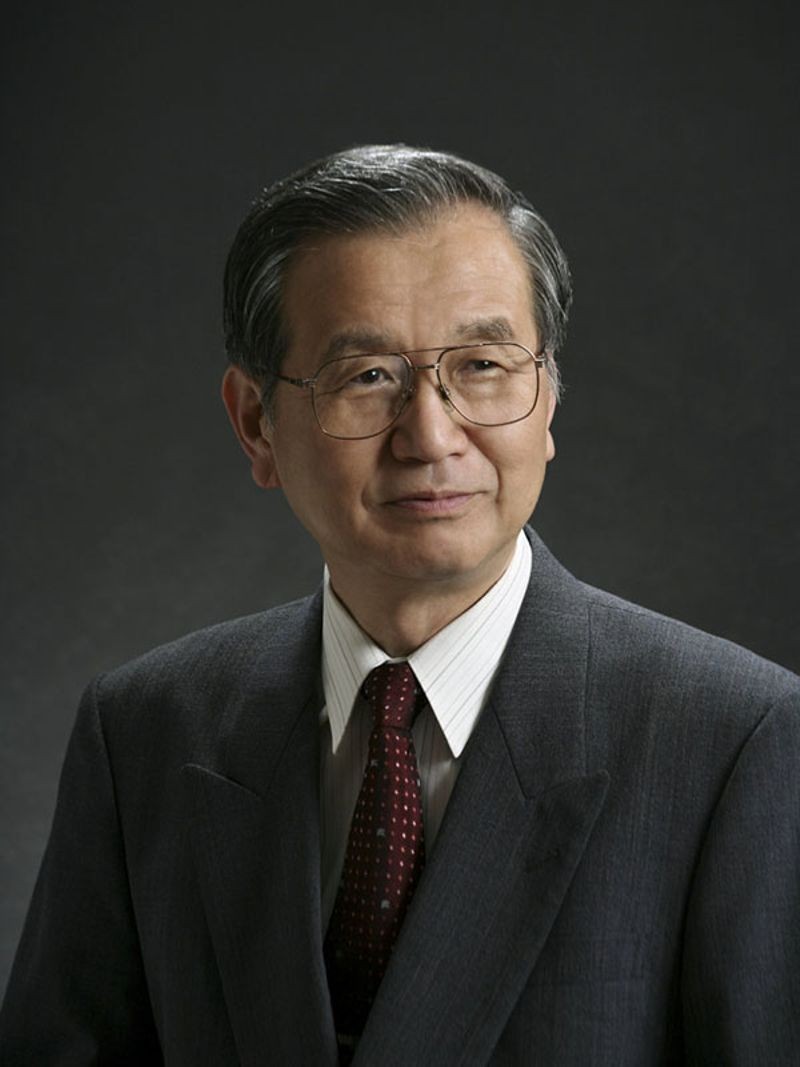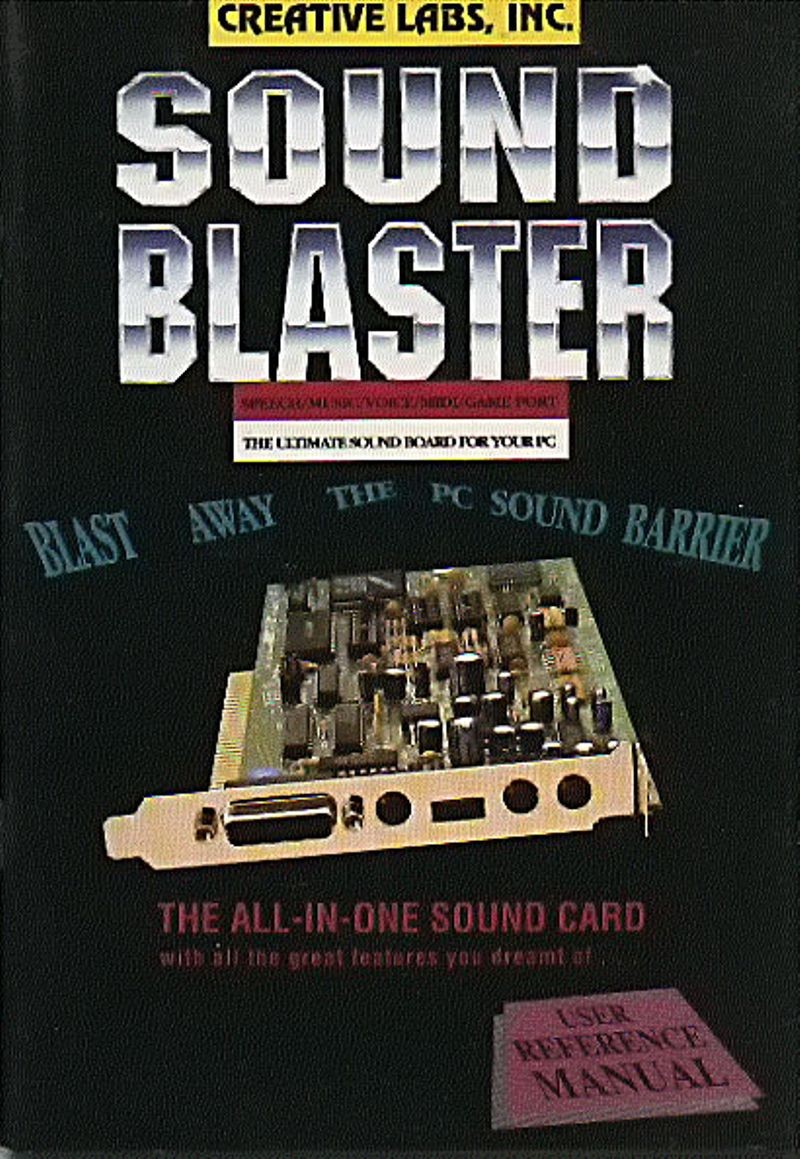
Commodore VIC-20
Commodore introduces the VIC-20
Commodore releases the VIC-20 home computer as the successor to the Commodore PET personal computer. Intended to be a less expensive alternative to the PET, the VIC-20 was highly successful, becoming the first computer to sell more than a million units. Commodore even used Star Trek television star William Shatner in advertisements.
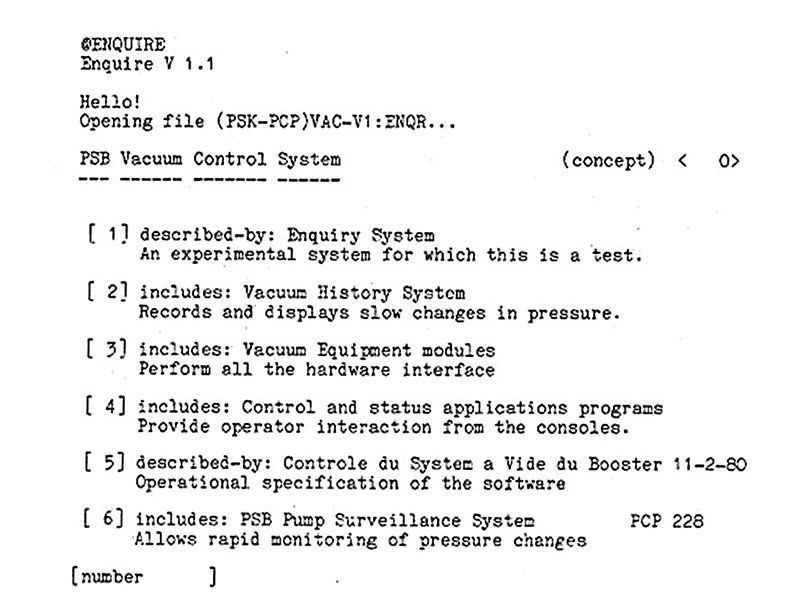
Enquire screenshot
Enquire
In 1980 Tim Berners-Lee at the CERN physics laboratory creates Enquire, a networked hypertext system used for project management but with far greater ambitions. It seeks to categorize hyperlinks in a way that can be read by computers as well as people. He later claims he hadn’t been aware of earlier hypertext work at the time, so it may be an independent reinvention. He names the program after a Victorian advice book and encyclopedia he had loved as a child, *Enquire Within (about Everything).” Berners-Lee will go on to invent the World Wide Web, partly based on Enquire.
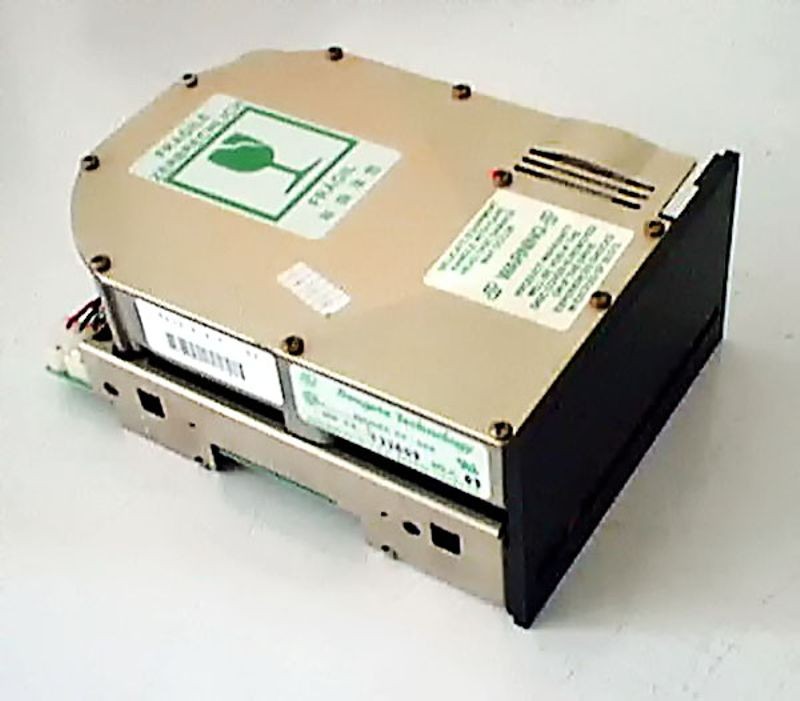
ST506 5MB HDD
Seagate ST506 hard disk drive
Seagate Technology creates the first hard disk drive for microcomputers, the ST506. The disk held 5 megabytes of data, five times as much as a standard floppy disk, and fit in the space of a floppy disk drive. The hard disk drive itself was a rigid metallic platter coated on both sides with a thin layer of magnetic material that stores digital data.
Seagate Technology grew out of a 1979 conversation between Alan Shugart and Finis Conner, who had worked together at Memorex. The two men decided to found the company after developing the idea of scaling down a hard disk drive to the same size as the then-standard 5 ¼-inch floppies. Upon releasing its first product, Seagate quickly drew such big-name customers as Apple Computer and IBM. Within a few years, it sold 4 million units.

Sinclair ZX80
The Sinclair ZX80 introduced
This very small home computer is available in the UK as a kit for £79 or pre-assembled for £99. Inside was a Z80 microprocessor and a built-in BASIC language interpreter. Output was displayed on the user’s home TV screen through use of an adapter. About 50,000 were sold in Britain, primarily to hobbyists, and initially there was a long waiting list for the system.
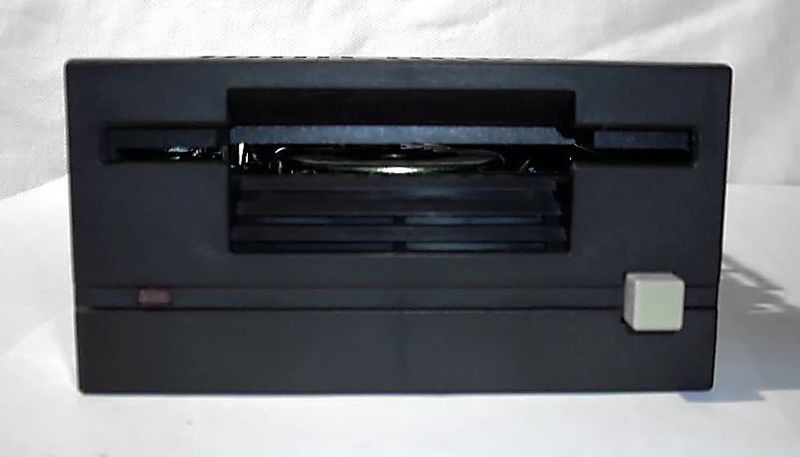
3 ½-inch floppy disk drive
3 ½-inch floppy drive
Sony introduces the first 3 ½-inch floppy drives and diskettes in 1981. The first significant company to adopt the 3 ½-inch floppy for general use was Hewlett-Packard in 1982, an event which was critical in establishing momentum for the format and which helped it prevail over the other contenders for the microfloppy standard, including 3-inch, 3 ¼-inch, and 3.9-inch formats.
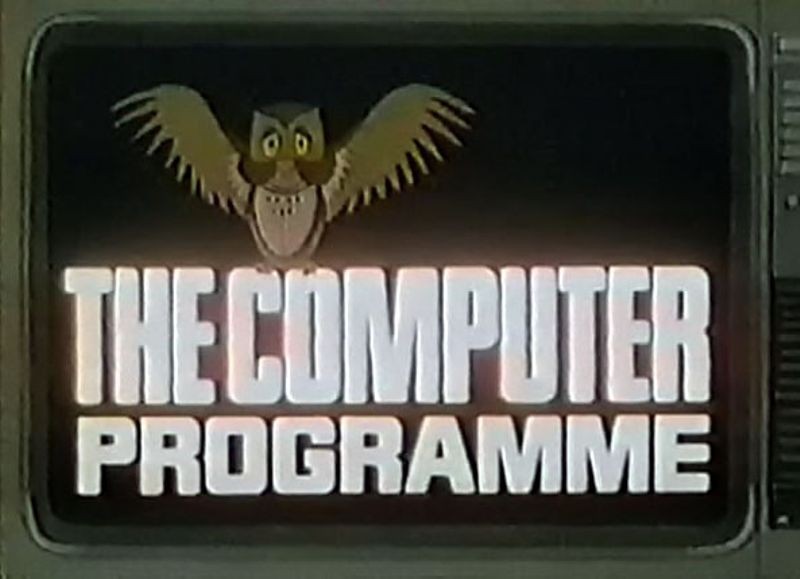
Title card- BBC’s The Computer Programme
The Computer Programme debuts on the BBC
The British Broadcasting Corporation’s Computer Literacy Project hoped “to introduce interested adults to the world of computers.” Acorn produces a popular computer, the BBC Microcomputer System, so viewers at home could follow along on their own home computers as they watched the program. The machine was expandable, with ports for cassette storage, serial interface and rudimentary networking. A large amount of software was created for the “BBC Micro,” including educational, productivity, and game programs.
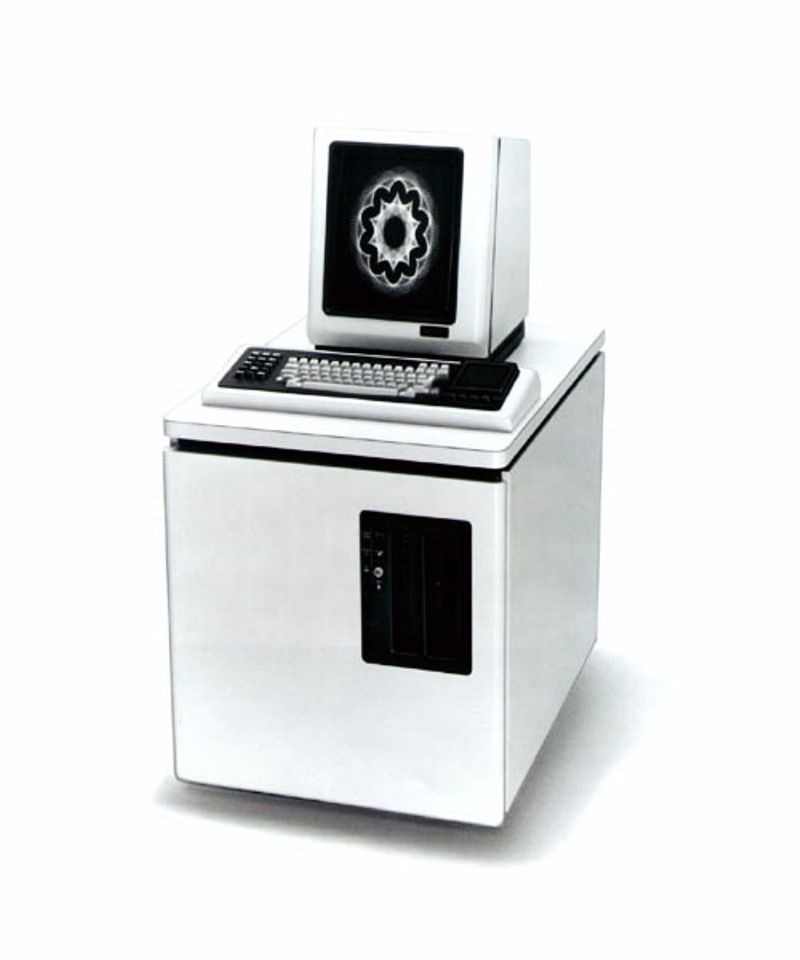
Apollo DN100
Apollo Computer unveils its first workstation, its DN100
The DN100 is based on the Motorola 68000 microprocessor, high-resolution display and built-in networking – the three basic features of all workstations. Apollo and its main competitor, Sun Microsystems, optimized their machines to run the computer-intensive graphics programs common in engineering and scientific applications. Apollo was a leading innovator in the workstation field for more than a decade, and was acquired by Hewlett-Packard in 1989.

Cover Electronic Games
Arnie Katz, Joyce Worley-Katz, and Bill Kunkle form first video game magazine, Electronic Games
In 1981, Joyce Worley Katz, Arnie Katz, and Bill Kunkel co-found Electronic Games, the first video game magazine in the United States. Initially intended as an annual publication, early success led to it becoming a monthly within a year of the first issue. The Video Game Crash of 1983 led to Electronic Games renaming itself Computer Entertainment, before finally ceasing publication with its May 1985 issue.
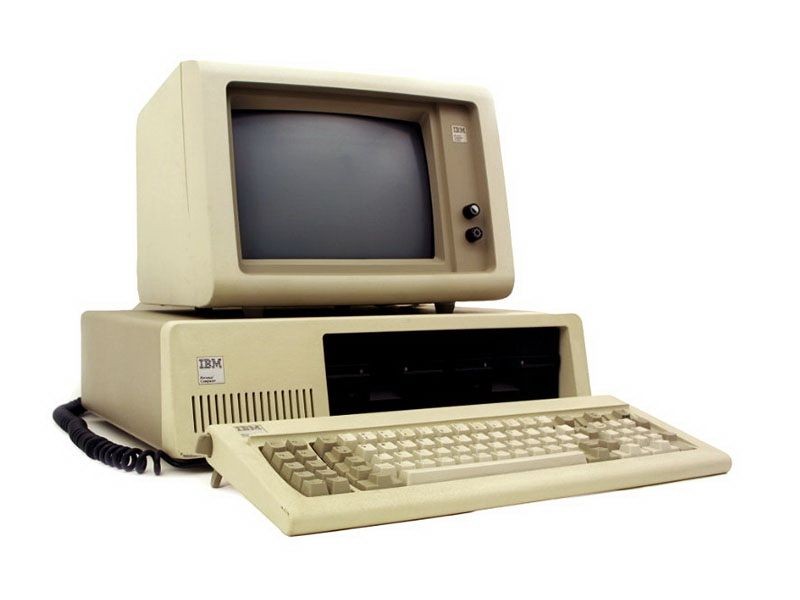
IBM PC
IBM introduces its Personal Computer (PC)
IBM’s brand recognition, along with a massive marketing campaign, ignites the fast growth of the personal computer market with the announcement of its own personal computer (PC). The first IBM PC, formally known as the IBM Model 5150, was based on a 4.77 MHz Intel 8088 microprocessor and used Microsoft´s MS-DOS operating system. The IBM PC revolutionized business computing by becoming the first PC to gain widespread adoption by industry. The IBM PC was widely copied (“cloned”) and led to the creation of a vast “ecosystem” of software, peripherals, and other commodities for use with the platform.
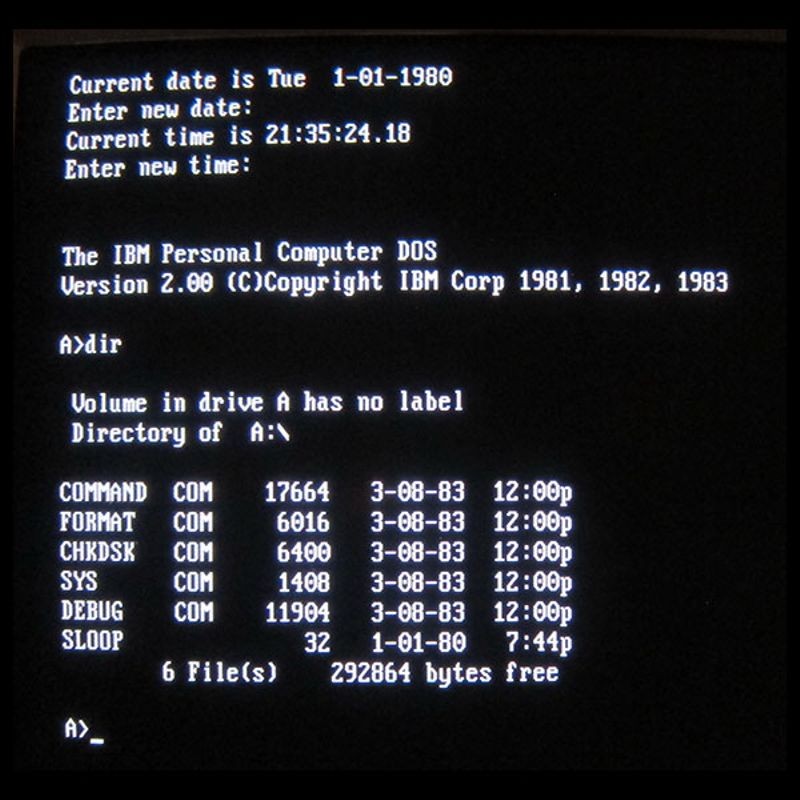
MS-DOS startup screen
MS-DOS released with the IBM PC
MS-DOS, or Microsoft Disk Operating System, the basic software for the newly released IBM PC, is the start of a long partnership between IBM and Microsoft, which Bill Gates and Paul Allen had founded only six years earlier. IBM’s PC inspired hardware imitators in the 1980s, but for software, most licensed MS-DOS. MS-DOS was eventually supplanted by Microsoft’s Windows operating system.

Osborne I
Osborne 1 introduced
Weighing 24 pounds and costing $1,795, the Osborne 1 is the first mass-produced portable computer. Its price was especially attractive as the computer included very useful productivity software worth about $1,500 alone. It featured a 5-inch display, 64 KB of memory, a modem, and two 5.25-inch floppy disk drives.
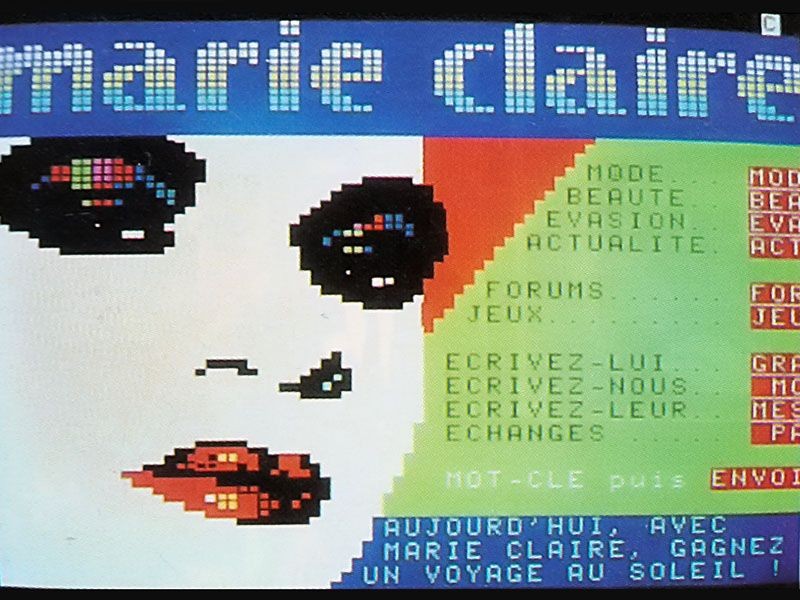
Minitel
The First Mass “Web”: Minitel Goes Public
Free! That’s often an effective way to attract customers. In 1981, France Telecom offers free Minitel terminals to every phone subscriber, launching the first mass “Web.” Minitel will have tens of millions of users by 1990 and online services such as newspapers, train schedules, tax filing, and erotic classified ads as well as email and chat. The ‘80s Minitel boom heavily foreshadows the dot-com boom. But the business model is different. Customers pay by the minute for access to Minitel services (sites), charged on their phone bills; France Telecom keeps about a third and passes on the rest to the service provider. As in the later Web, Minitel service providers run their own servers. But they also pay France Telecom a fee to connect to its network. Despite major efforts in the US, Canada, and Europe, similar videotex systems will fizzle outside France.
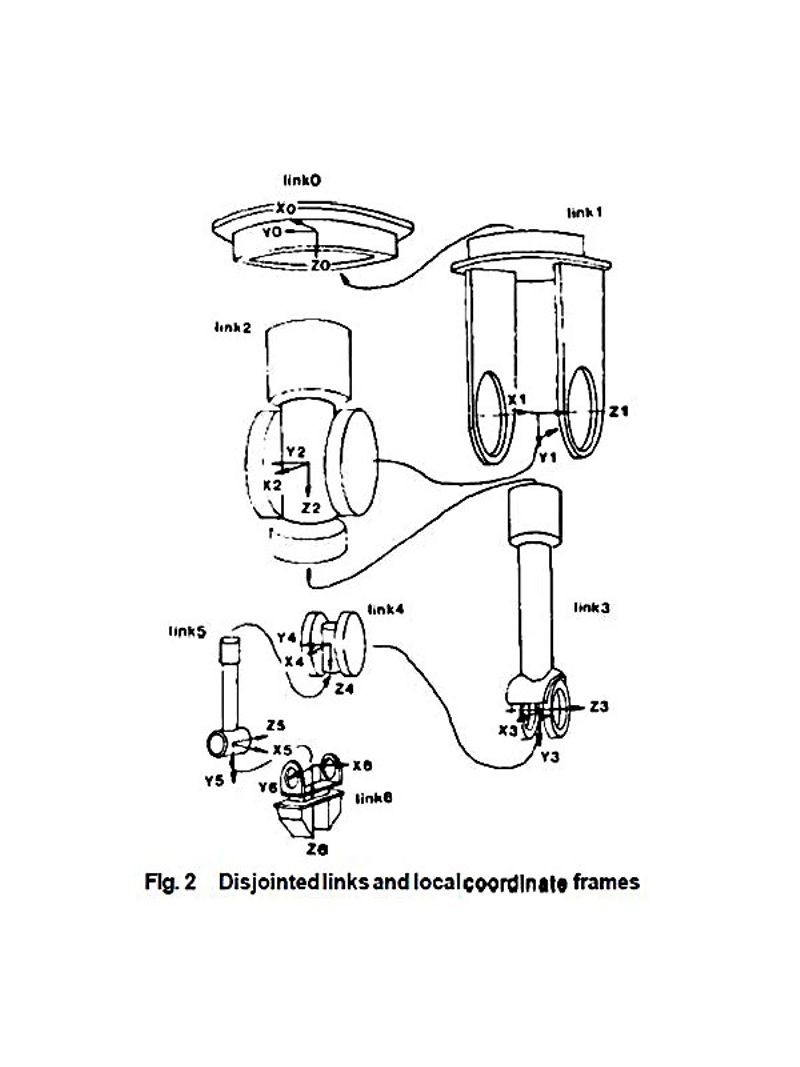
Direct Drive arm diagram
The direct drive arm
The first direct drive (DD) arm by Takeo Kanade serves as the prototype for DD arms used in industry today. The electric motors housed inside the joints eliminated the need for the chains or tendons used in earlier robots. DD arms were fast and accurate because they minimize friction and backlash.
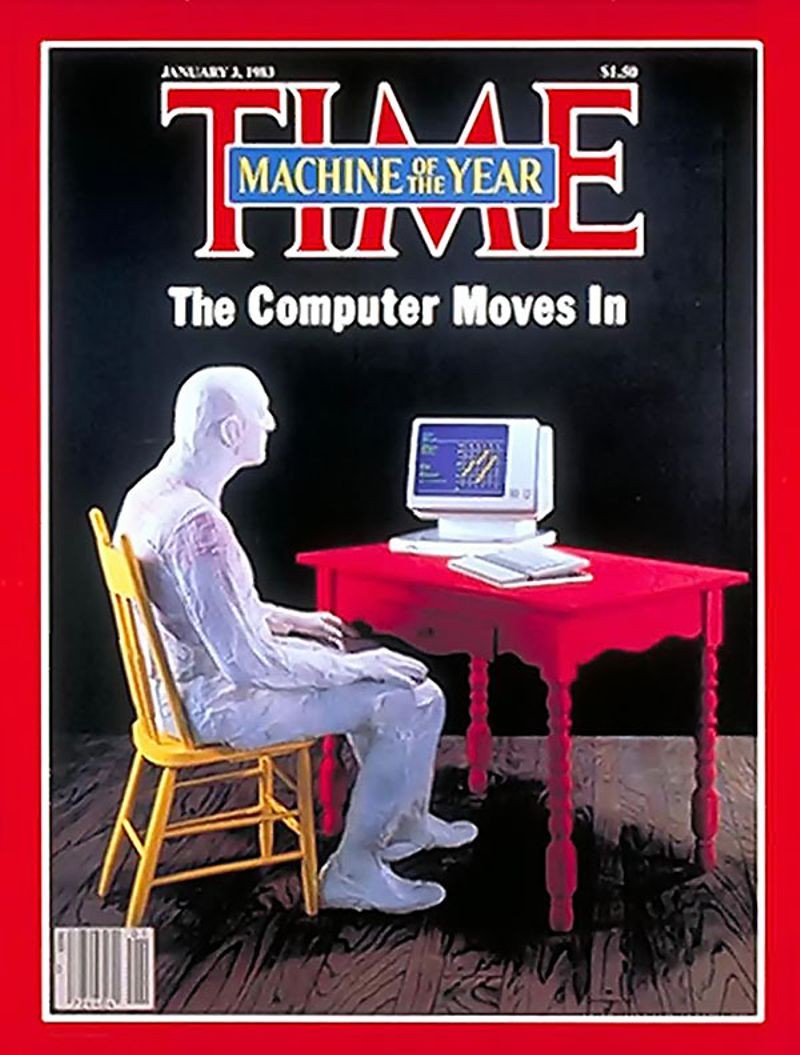
1982 TIME “Machine of the Year” cover
TIME announces “Machine of the Year”
TIME magazine alters its annual tradition of naming a “Man of the Year,” choosing instead to name the personal computer its “Machine of the Year.” In introducing the theme, TIME publisher John A. Meyers wrote, “Several human candidates might have represented 1982, but none symbolized the past year more richly, or will be viewed by history as more significant, than a machine: the computer.” His magazine, he explained, has chronicled the change in public opinion with regard to computers. A senior writer contributed: “computers were once regarded as distant, ominous abstractions, like Big Brother. In 1982, they truly became personalized, brought down to scale, so that people could hold, prod and play with them.” At TIME, the main writer on the project completed his work on a typewriter, but Meyers noted that the magazine’s newsroom would upgrade to word processors within a year.
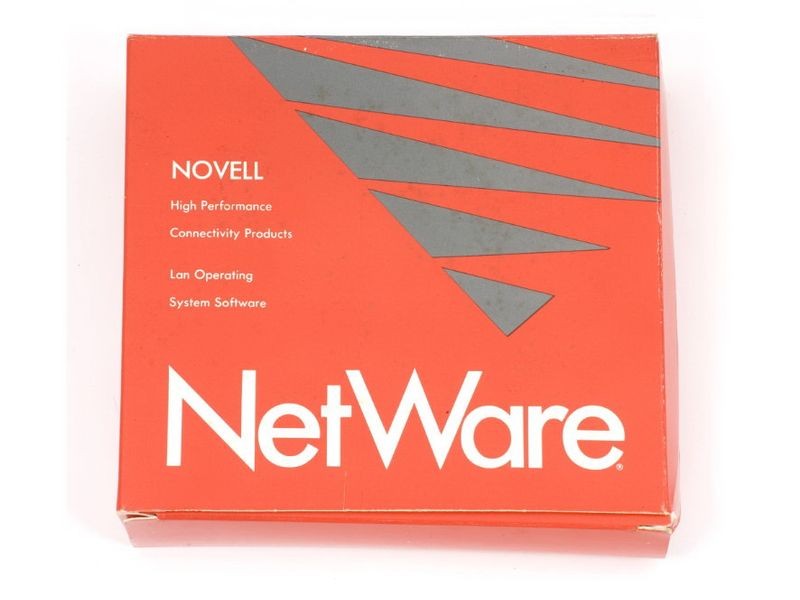
Novell Lan Operating System Software box
Automating the office – LAN operating systems
Protocols like Ethernet or Token Ring have established low-level links between computers and peripherals in the office. But that’s only part of the solution – workers still need to do higher-level tasks such as sending e-mail, exchanging files, and sharing printers.
This need yields a hodge-podge of third party “network operating systems,” including Novell Netware, and built-in solutions like Apple’s AppleTalk. In the 1990s, Internet protocols will replace them all.
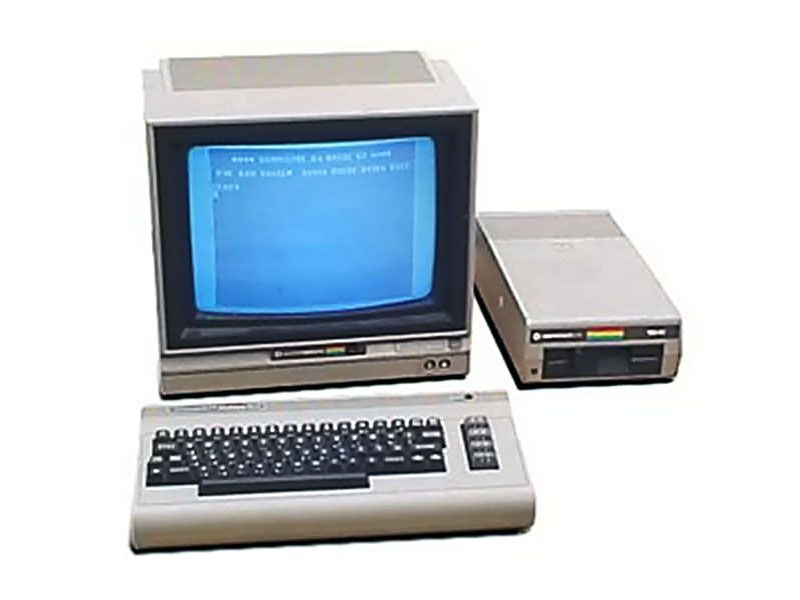
Commodore 64 system
Commodore introduces the Commodore 64
The C64, as it is better known, sells for $595, comes with 64 KB of RAM and features impressive graphics. Thousands of software titles were released over the lifespan of the C64 and by the time it was discontinued in 1993, it had sold more than 22 million units. It is recognized by the 2006 Guinness Book of World Records as the greatest selling single computer of all time.
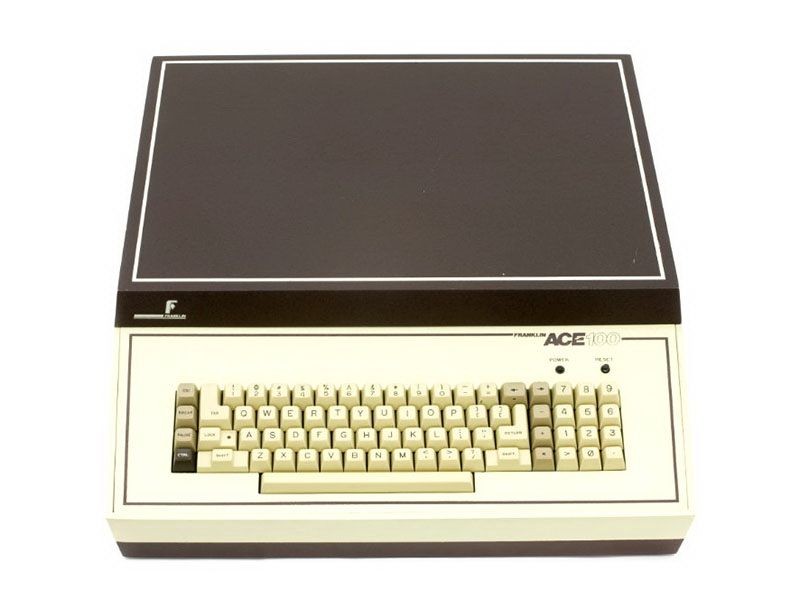
Franklin Ace 100 microcomputer
Franklin releases Apple II “clones”
Created almost five years after the original Apple II, Franklin’s Ace 1000 main logic board is nearly identical to that in the Apple II+ computer, and other models were later cloned as well. Franklin was able to undercut Apple’s pricing even while offering some features not available on the original. Initially, Franklin won a court victory allowing them to continue cloning the machines, but in 1988, Apple won a copyright lawsuit against Franklin, forcing them to stop making Apple II “clones.”
Internetting as a Business
Bolt Beranek and Newman, which had built the original IMP and designed important parts of the ARPAnet, had also been a key participant in ARPA’s 1977 internetworking experiments. They produce early switches like the C/30 Communications Processors, but nimbler rivals like Cisco will soon overtake them.

Still from the Genesis Effect
Lucasfilm produces the Genesis Effect for Star Trek II: The Wrath of Khan
The major motion picture Star Trek II: The Wrath of Khan, features one of the earliest completely computer-generated cinematic image (CGI) sequences in a feature film. Called the Genesis Effect, the sequence showed the rebirth of a barren planet by a computer generated ‘ring of life’ that swept across the planet’s surface, creating an atmosphere and life on a planetary scale as it went.
The sequence was created by the computer graphics group at Lucasfilm, who were greatly inspired by the simulations of Jupiter and Saturn fly-bys done by Jim Blinn for NASA’s Jet Propulsion Laboratory at Caltech. The Lucasfilm team, directed by Alvy Ray Smith, produced the effect using Lucasfilm’s two DEC VAX computers, two Ikonas color frame buffers, and an Evans and Sutherland Picture System vector display. The sequence, now considered a classic in computer animation and filmmaking, lasts just over one minute, and took two person-years of work to complete.
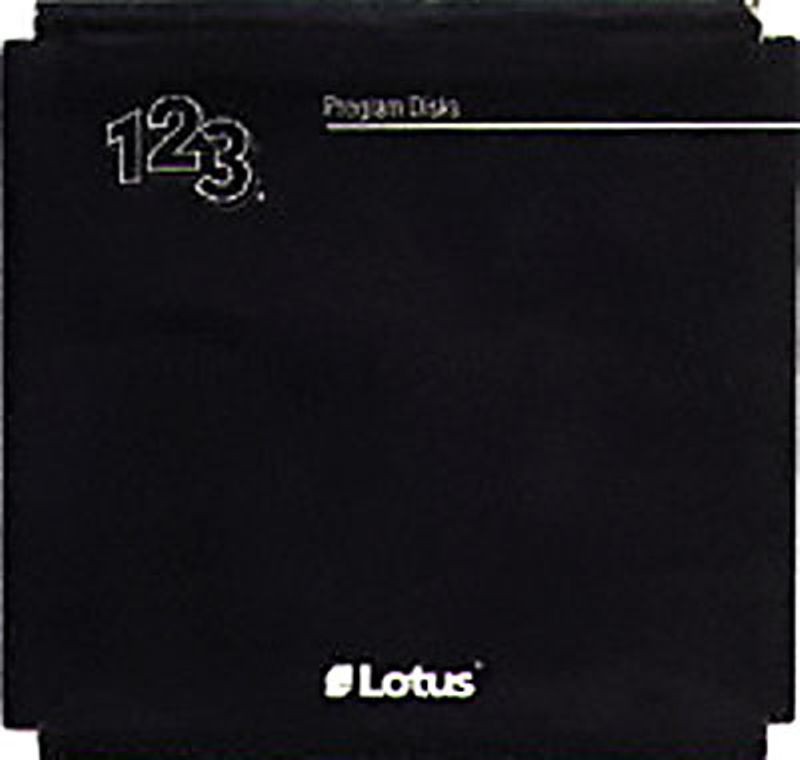
Lotus 1-2-3 5 ¼ inch diskette
Mitch Kapor develops Lotus 1-2-3
Mitch Kapor develops Lotus 1-2-3, a software suite for the IBM PC based on a word processor, spreadsheet, and database. It quickly became the first “killer application” for the IBM PC, and contributed to the success of the PC in business. IBM purchased Lotus in 1995.
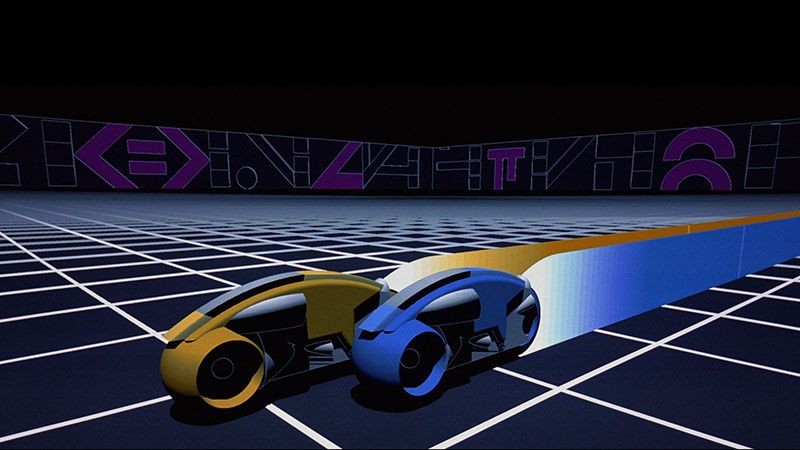
Scene from Tron
Movie Tron released
The use of computer-generated graphics in movies takes a big step forward with Disney´s release of Tron. One of the first movies to use such graphics, the plot of Tron itself also featured computers – it followed the adventures of a hacker translated into data and transported inside a computer. Although it had modest success at the box-office, Tron nonetheless has become a cult classic.
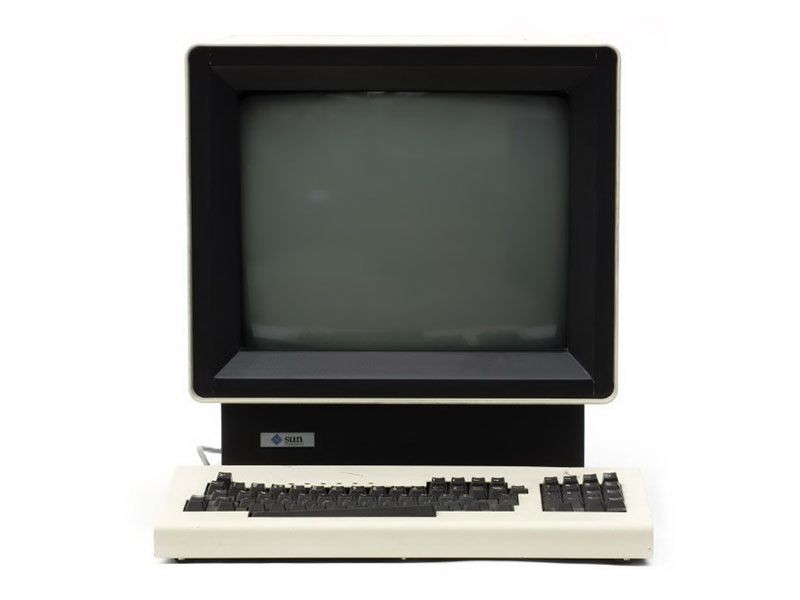
Sun-1 workstation
Sun Microsystems is founded
When Xerox PARC loaned the Stanford Engineering Department an entire Alto Ethernet network with laser printer, graduate student Andy Bechtolsheim re-designed it into a prototype that he then attached to Stanford’s computer network. Sun Microsystems grows out of this prototype. The roots of the company’s name came from the acronym for Stanford University Network (SUN). The company was incorporated by three 26-year-old Stanford alumni: Bechtolsheim, Vinod Khosla and Scott McNealy. The trio soon attracted UC Berkeley UNIX guru Bill Joy, who led software development. Sun helped cement the model of a workstation having an Ethernet interface as well as high-resolution graphics and the UNIX operating system.
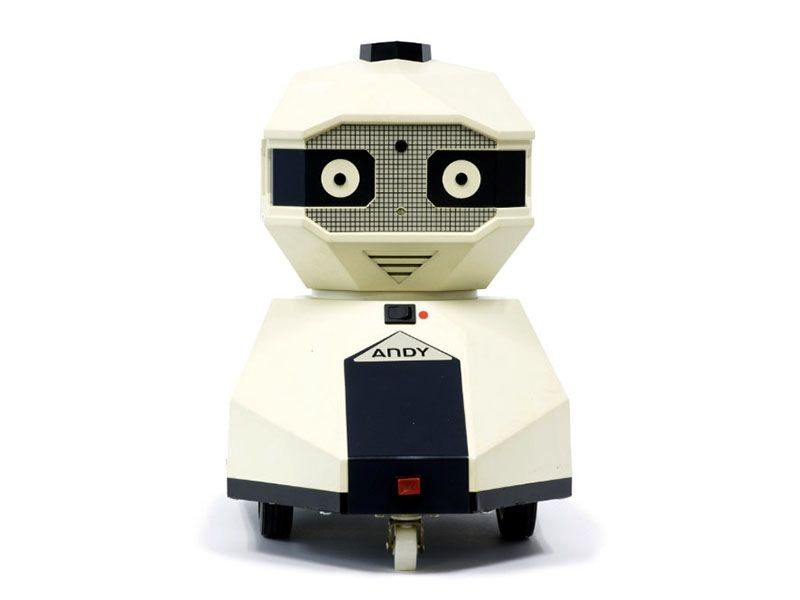
The FRED robot
The FRED robot
Nolan Bushnell founded Androbot with former Atari engineers to make playful robots. The “Friendly Robotic Educational Device” (FRED), designed for 6-15 year-olds, never made it to market.
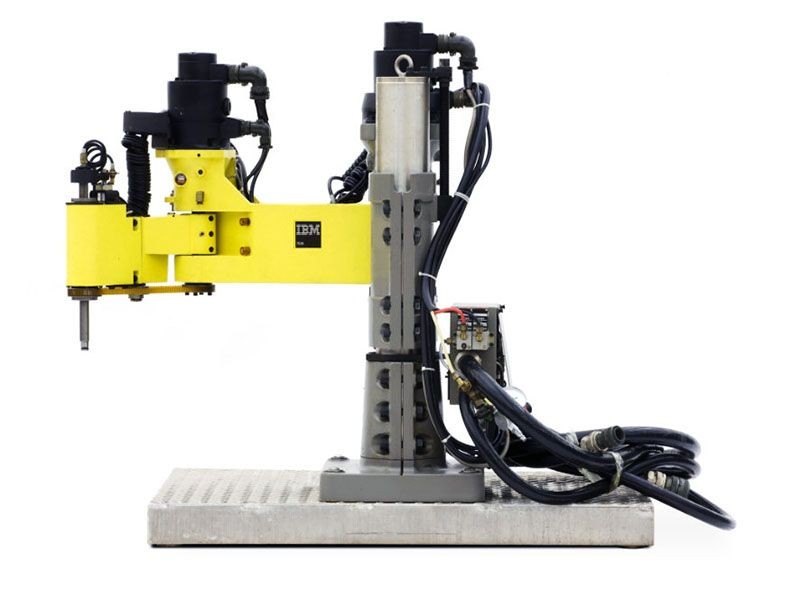
IBM’s 7535
The IBM 7535
Based on a Japanese robot, IBM’s 7535 was controlled by an IBM PC and programmed in IBM’s AML (“A Manufacturing Language”). It could manipulate objects weighing up to 13 pounds.
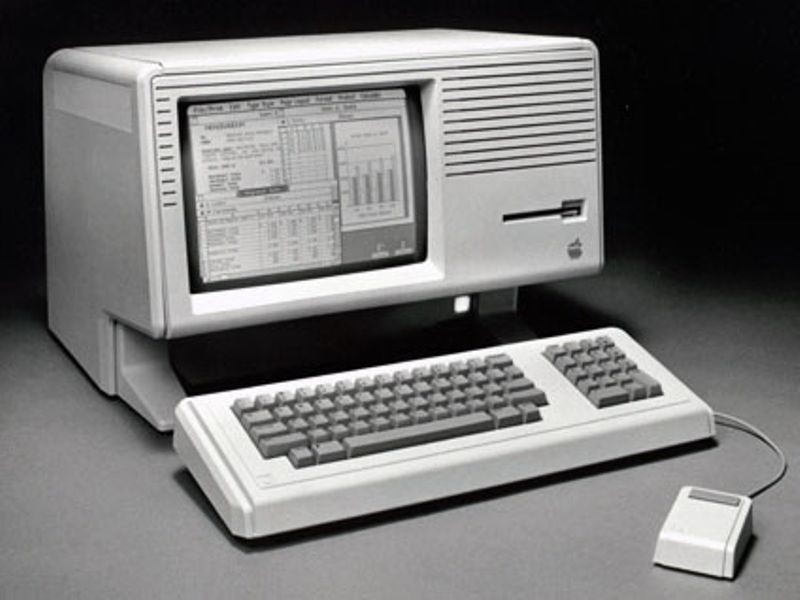
Apple Lisa
Apple introduces the Lisa computer
Lisa is the first commercial personal computer with a graphical user interface (GUI). It was thus an important milestone in computing as soon Microsoft Windows and the Apple Macintosh would soon adopt the GUI as their user interface, making it the new paradigm for personal computing. The Lisa ran on a Motorola 68000 microprocessor and came equipped with 1 MB of RAM, a 12-inch black-and-white monitor, dual 5.25-inch floppy disk drives and a 5 MB “Profile” hard drive. Lisa itself, and especially its GUI, were inspired by earlier work at the Xerox Palo Alto Research Center.
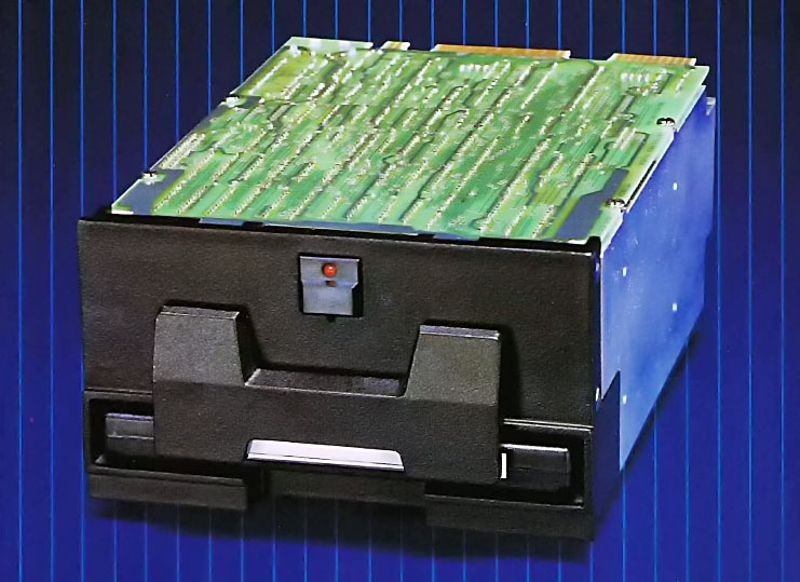
Bernoulli Box
Bernoulli Box
The Bernoulli Box is released. Using a special cartridge-based system that used hard disk technology, the Bernoulli Box was a type of removable storage that allowed people to move large files between computers when few alternatives (such as a network) existed. Allowing for many times the amount of storage afforded by a regular floppy disk, the cartridges came in capacities ranging from 5MB to 230MB.
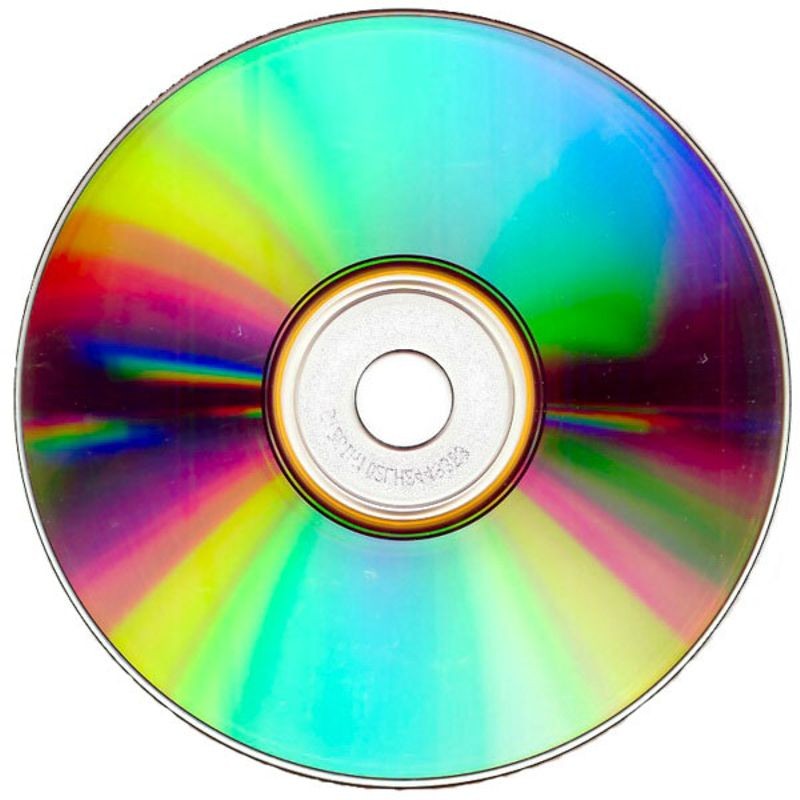
CD-ROM
CD-ROM
Able to hold 550 megabytes of pre-recorded data, CD-ROMs grow out of music Compact Disks (CDs). The CD was developed by Sony and Philips in 1982 for distributing music. The first general-interest CD-ROM product released after Philips and Sony announced the CD-ROM format in 1984 was Grolier´s Electronic Encyclopedia, which came out in 1985. The 9 million words in the encyclopedia only took up 12 percent of the available space. The same year, computer and electronics companies worked together to set a standard for the disks so any computer would be able to access the information.

Compaq Portable
Compaq Computer Corporation introduces the Compaq Portable
Advertised as the first 100% IBM PC-compatible computer, the Compaq Portable can run the same software as the IBM PC. With the success of the clone, Compaq recorded first-year sales of $111 million, the most ever by an American business in a single year. The success of the Portable inspired many other early IBM-compatible computers. Compaq licensed the MS-DOS operating system from Microsoft and legally reverse-engineered IBM’s BIOS software. Compaq’s success launched a market for IBM-compatible computers that by 1996 had achieved an 83-percent share of the personal computer market.
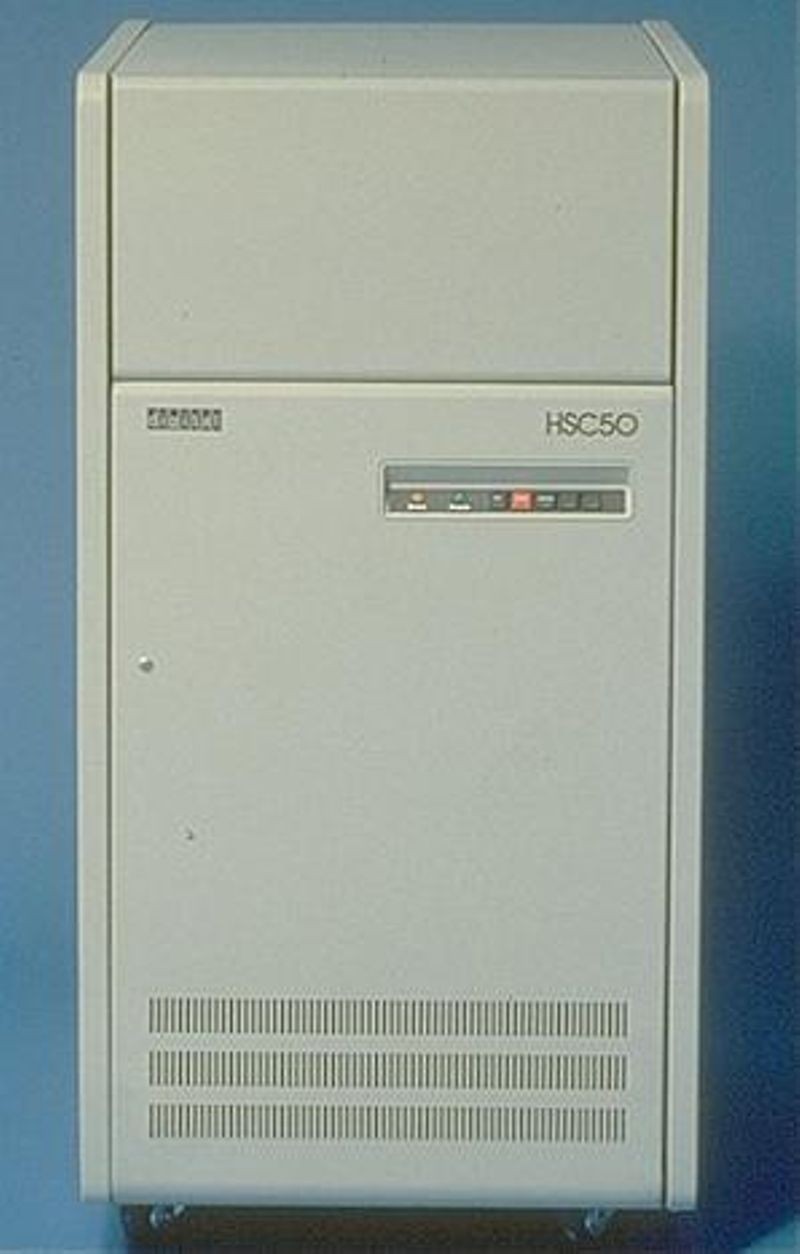
DEC HSC50 Disk Controller
DEC ships the HSC50 controller, its first intelligent disk subsystem
The HSC50 contains local intelligence capable of managing the physical activity of the drives, optimizing subsystem throughput, detecting and correcting physical errors, and performing local functions such as diagnostic execution without host intervention.

The Road to Point Reyes
Lucasfilm produces The Road to Point Reyes
One of the most significant static images in the history of computer graphics, The Road to Point Reyes is one of Lucasfilm’s most important early projects. Begun in 1983, Rob Cook directed the image and conceived the scene, while Alvy Ray Smith, Loren Carpenter, Tom Porter, Bill Reeves, and David Salesin provided various elements including shading, hidden surface routines, and fractals. The single image, which Smith has described as a ‘one-frame Movie,’ took a month to render, and was eventually displayed at The Computer Museum in Boston.
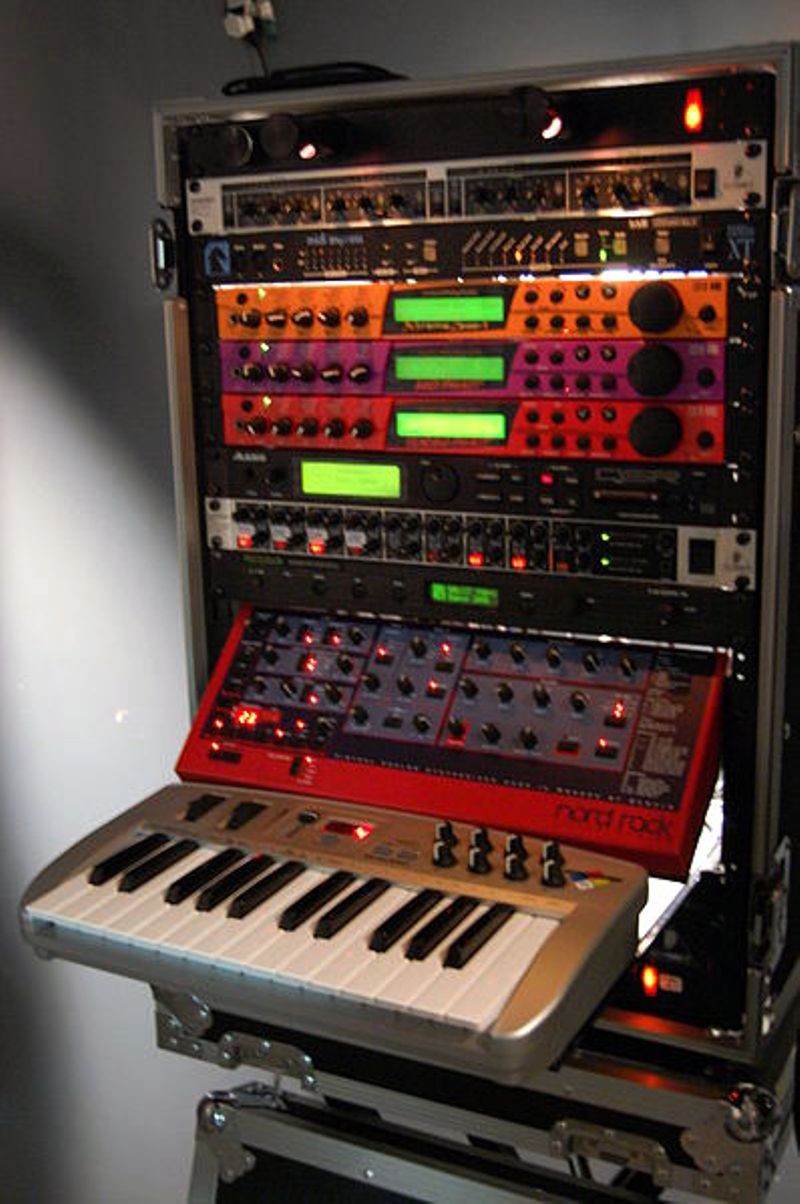
Single rack MIDI setup
MIDI and The Age of Intelligent Machines
The Musical Instrument Digital Interface (MIDI) is introduced at the first North American Music Manufacturers (NAMM) show in Los Angeles. MIDI is an industry-standard electronic interface that links computers with electronic musical instruments.
Raymond Kurzweil, a pioneer in developing electronic keyboards, predicts MIDI and other advances will make traditional musical instruments obsolete in the future. In the 21st century, he writes in his book, The Age of Intelligent Machines, “There will still be acoustic instruments around, but they will be primarily of historical interest, much like harpsichords are today…. While the historically desirable sounds of pianos and violins will continue to be used, most music will use sounds with no direct acoustic counterpart… There will not be a sharp division between the musician and non-musician.”
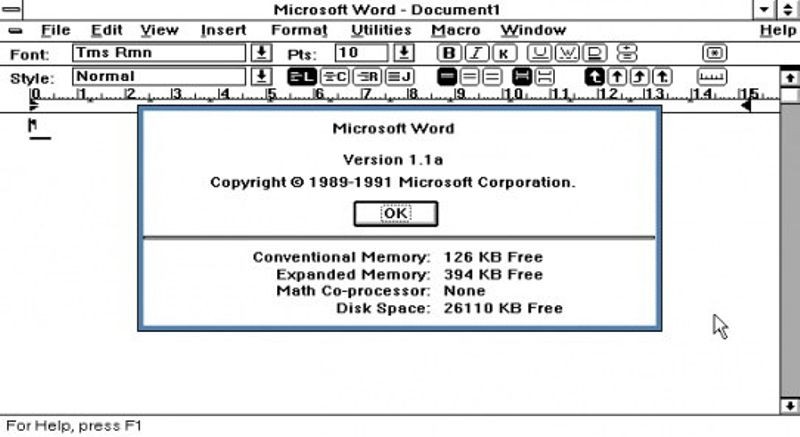
Microsoft Word 1.1 screenshot
Microsoft introduces Word
Microsoft announces Word, originally called Multi-Tool Word. In a marketing blitz, Microsoft distributed 450,000 disks containing a demonstration version of its Word program in the November issue of PC World magazine, giving readers a chance to try the program for free. It competed with WordPerfect for market share as a word processing program, and it was not until Microsoft Word for Windows was introduced in 1989 that it became a global standard.
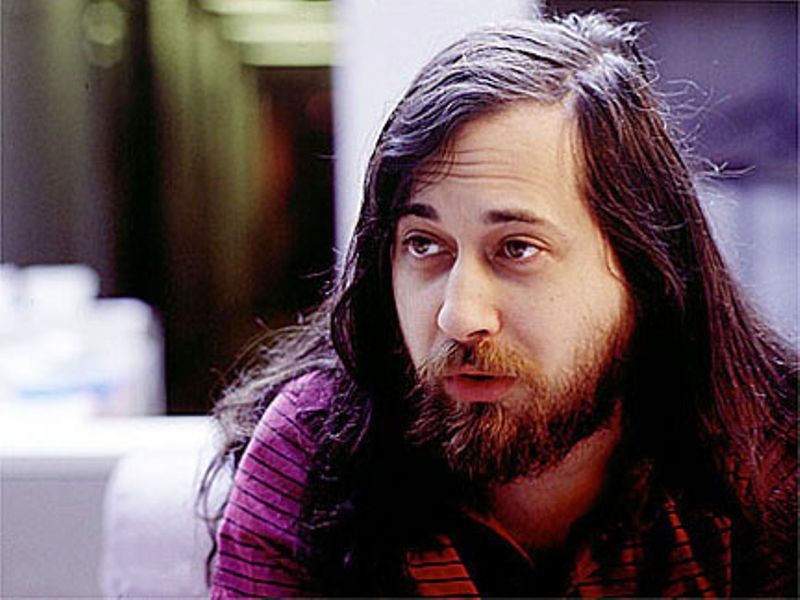
GNU developer Richard Stallman
Richard Stallman develops GNU
Richard Stallman, a programmer at MIT’s Artificial Intelligence Lab, set out to develop a free alternative to the popular Unix operating system. This operating system called GNU (for Gnu’s Not Unix) was going to be free of charge but also allow users the freedom to change and share it. Stallman founded the Free Software Foundation (FSF) based on this philosophy in 1985.
While the GNU work did not immediately result in a full operating system, it provided the necessary tools for creating another Unix-type system known as Linux. The software developed as part of the GNU project continues to form a large part of Linux, which is why the FSF asks for it to be called GNU/Linux.
Apple 1984 commercial debuts
Apple’s “1984” commercial is aired during Super Bowl XVIII on January 22, 1984. Earlier that month, Apple’s Macintosh computer was already the most anticipated personal computer release ever. As a part of the rollout, Apple commissioned director Ridley Scott to direct a one-minute commercial for the Mac. The commercial, which cost at least three hundred thousand dollars, was based partly on George Orwell’s novel 1984, with the role of Big Brother being filled by a man dictating to the masses from a giant screen, only to have a hammer-wielding woman run up and destroy the screen, freeing the people. The “Big Brother” motif was a veiled reference to IBM, Apple’s main competitor. The commercial, shown only once, is considered a major turning point in the marketing of computers.

Apple Macintosh
Apple Computer launches the Macintosh
Apple introduces the Macintosh with a television commercial during the 1984 Super Bowl, which plays on the theme of totalitarianism in George Orwell´s book 1984. The ad featured the destruction of “Big Brother” – a veiled reference to IBM — through the power of personal computing found in a Macintosh. The Macintosh was the first successful mouse-driven computer with a graphical user interface and was based on the Motorola 68000 microprocessor. Its price was $2,500. Applications that came as part of the package included MacPaint, which made use of the mouse, and MacWrite, which demonstrated WYSIWYG (What You See Is What You Get) word processing.
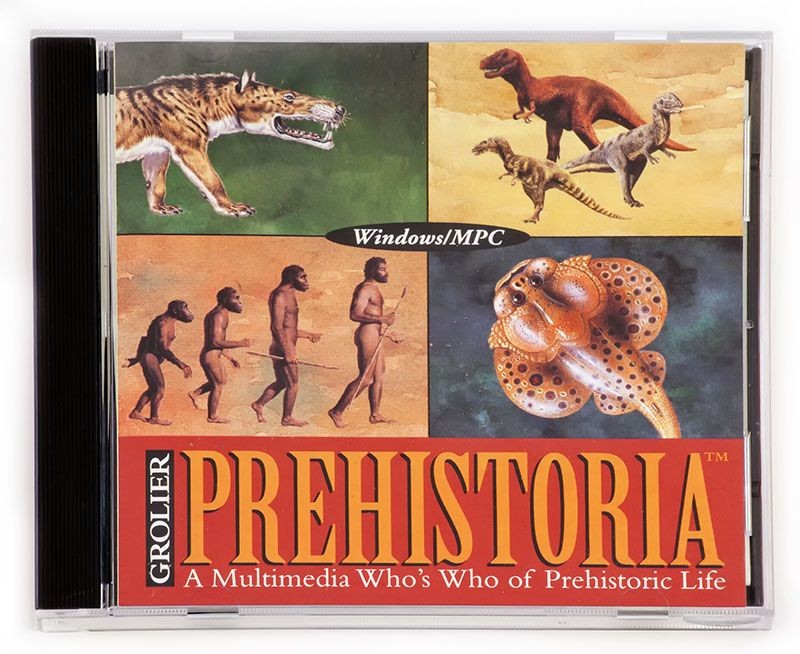
Grolier Prehistoria CD-ROM
CD-ROMs introduced, multimedia takes off
For music, the CD (Compact Disk) had come out in 1981. For data, the big date is 1984 when Phillips introduces the CD-ROM (the last part stands for Read Only Memory). In the late ‘80s and early ‘90s, affordable computer CD-ROM drives will enable multimedia encyclopedias, games, novels and reference information on CD, often with hypertext links for navigation. This content will turn out to be basically ready-made for the Web, and many publishers will simply port it over directly. For content that uses a lot of video or images, CD-ROMs will remain an important adjunct to Web browsing throughout the early Web era.
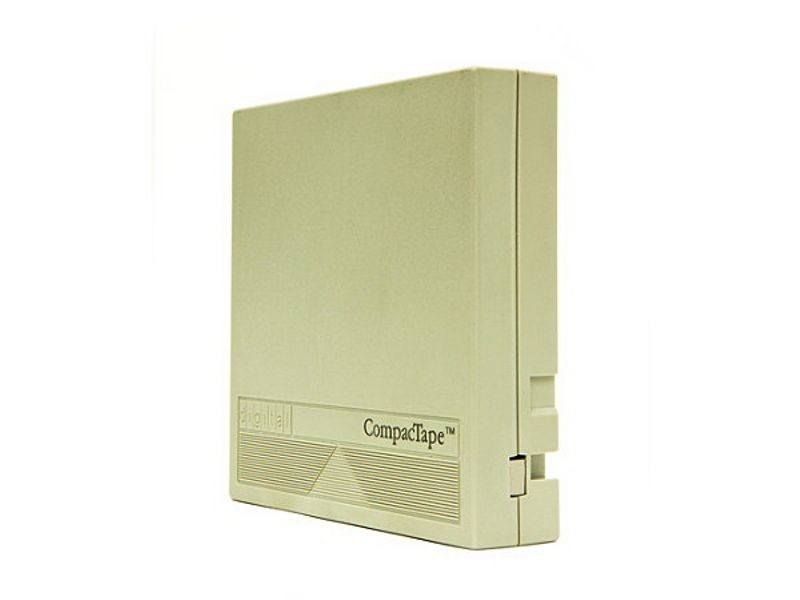
CompacTape cartridge
CompacTape
CompacTape is introduced. Originally developed by Digital Equipment Corporation for its VAX family of computers, the drive wrote 22 data tracks back and forth on ½-inch wide tape and originally held 92 MB of data. It replaced the 1960s-era DECtape, and its usage grew rapidly in the mid-1990s. It evolved into Digital Linear Tape (DLT), and was widely used in medium and large-sized Local Area Networks. The DLT technology was purchased by Quantum in 1994, and nearly 20 years after its introduction, “SuperDLT” could hold up to 800 GB of data.
Flash memory
Fujio Masuoka invents flash memory in 1984 while working for Toshiba. Capable of being erased and re-programmed multiple times, flash memory quickly gained a loyal following in the computer memory industry. Although Masuoka’s idea won praise, he was unhappy with what he saw as Toshiba’s failure to reward his work, and Masuoka quit to become a professor at Tohoku University. Bucking Japan’s culture of company loyalty, he sued his former employer demanding compensation, settling in 2006 for a one-time payment of ¥87m ($758,000).

Heathkit Hero Jr. robot
Hero Jr. robot kit
Heathkit introduces the Hero Jr. home robot kit, one of several robots it sells at the time. Hero Jr. could roam hallways guided by sonar, play games, sing songs and even act as an alarm clock. The brochure claimed it “seeks to remain near human companions” by listening for voices.
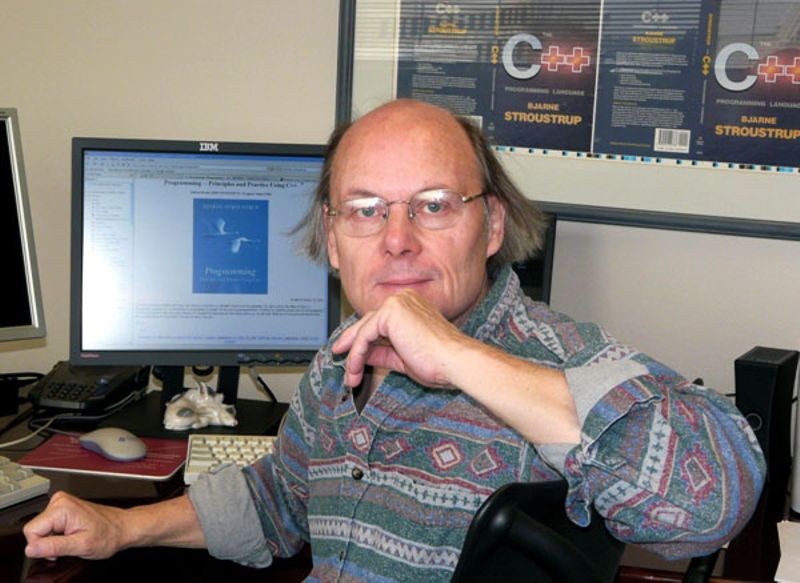
Bjarne Stroustrup
The C++ Programming Language is published
The C++ programming language emerges as the dominant object-oriented language in the computer industry when Bjarne Stroustrup publishes the book The C++ Programming Language. Stroustrup, from AT&T Bell Labs, said his motivation stemmed from a desire to create a language that would allow for more complex programs and which combined the low-level features of BCPL with the high-level structures of Simula.
According to Stroustrup: “C++ is a general purpose programming language designed to make programming more enjoyable for the serious programmer.”
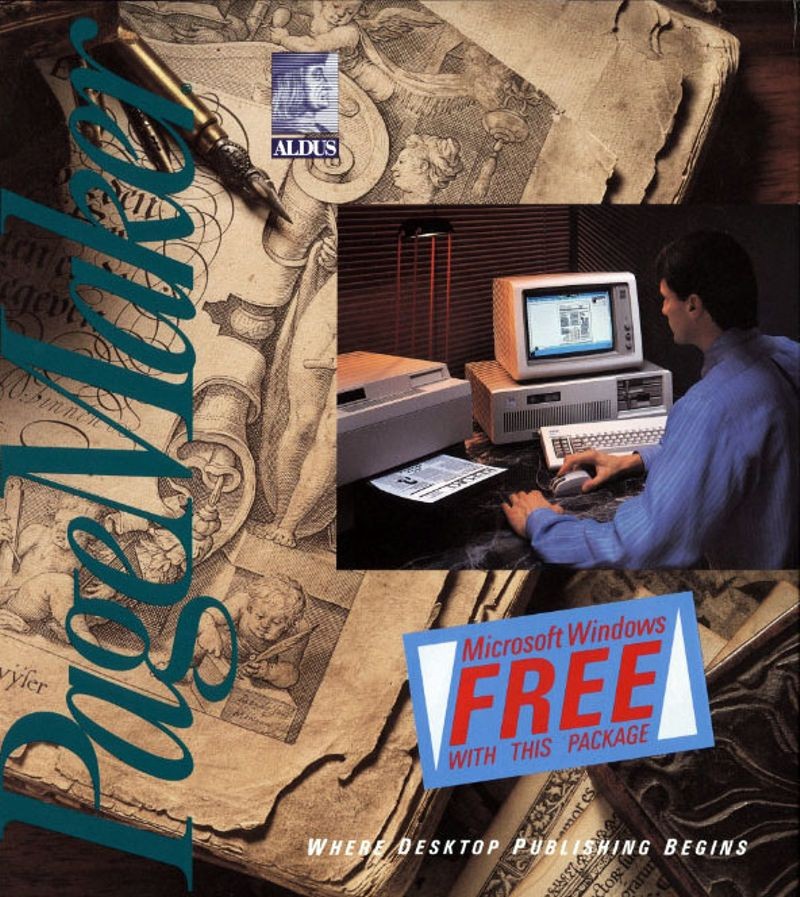
Aldus PageMaker 2 box
Aldus announces PageMaker
Aldus announces its PageMaker program for use on Macintosh computers, launching the desktop publishing revolution. Two years later, Aldus released a version for the IBM PC. Developed by Paul Brainerd, PageMaker allowed users to combine graphics and text easily into professional quality documents.
Pagemaker was one of three components to the desktop publishing revolution. The other two were the invention of Postscript by Adobe and the LaserWriter laser printer from Apple. All three were necessary to create a desktop publishing environment.
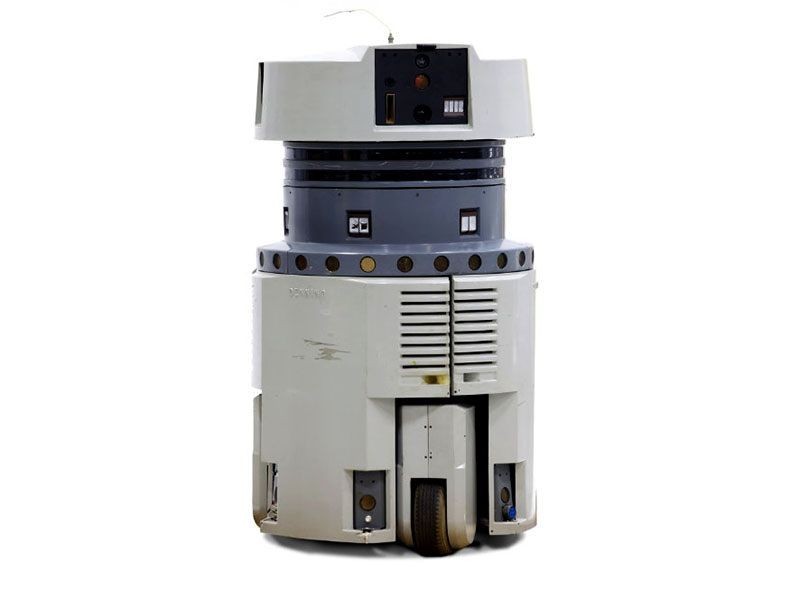
Denning Sentry robot
Denning Sentry robot
Boston-based Denning designed the Sentry robot as a security guard patrolling for up to 14 hours at 3 mph. It radioed an alert about anything unusual in a 150-foot radius. The product, and the company, did not succeed.
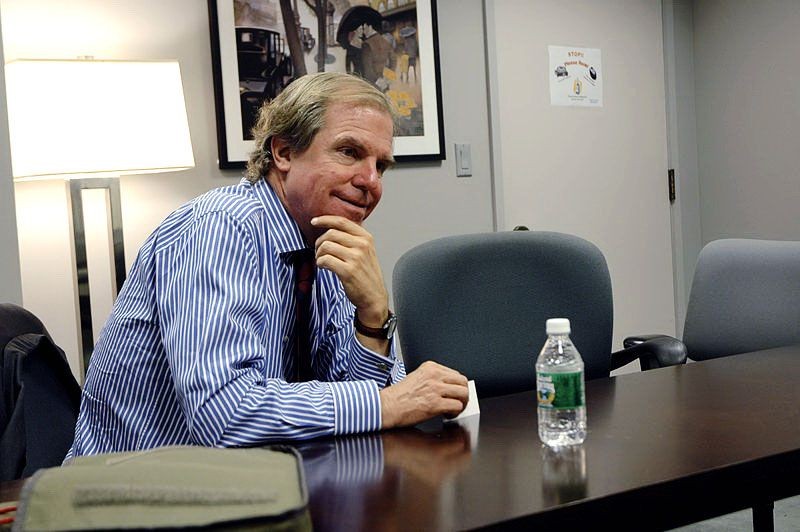
Nicholas Negroponte
MIT Media Lab founded
Professor Nicholas Negroponte and former MIT President Jerome Wiesner, a former science advisor to President John F. Kennedy, founds the MIT Media Lab in 1980. The Media Lab opened in an I.M. Pei-designed building, initially focusing on the ‘Digital Revolution’ in areas as wide-ranging as electronic music, machine learning, holography, computer graphics, and art. Work at the lab has led to hundreds of patents and many spin-off companies.
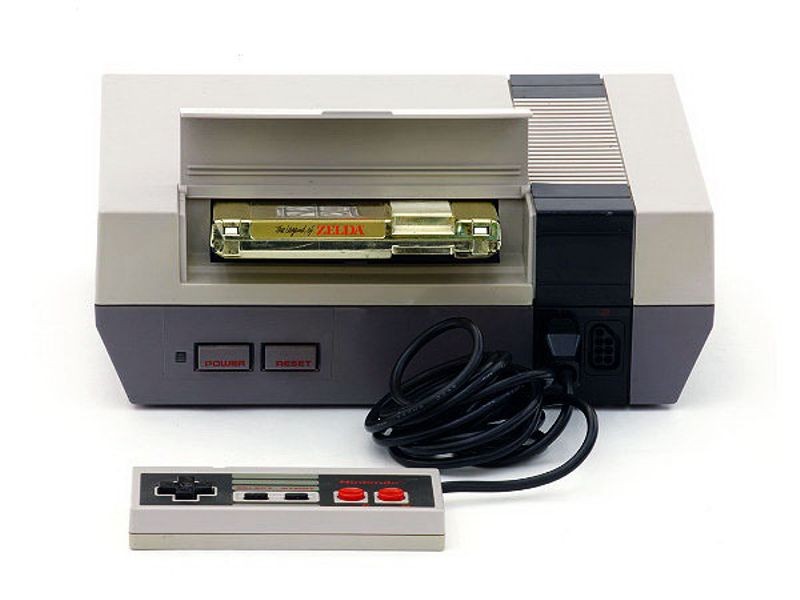
Nintendo Entertainment System game console
Nintendo releases the Nintendo Entertainment System (NES) in the U.S.
Since 1983, the American electronic game market had been depressed due to a glut of poorly performing games and consoles. That same year, Nintendo released its Famicom gaming system in Japan. Renamed the Nintendo Entertainment System (NES) when it was released in North America, the NES started to reverse the fortunes of the American game industry. The system launched with eighteen available titles, and was largely responsible for turning Mario the Plumber into one of the most enduring characters in the history of video games.
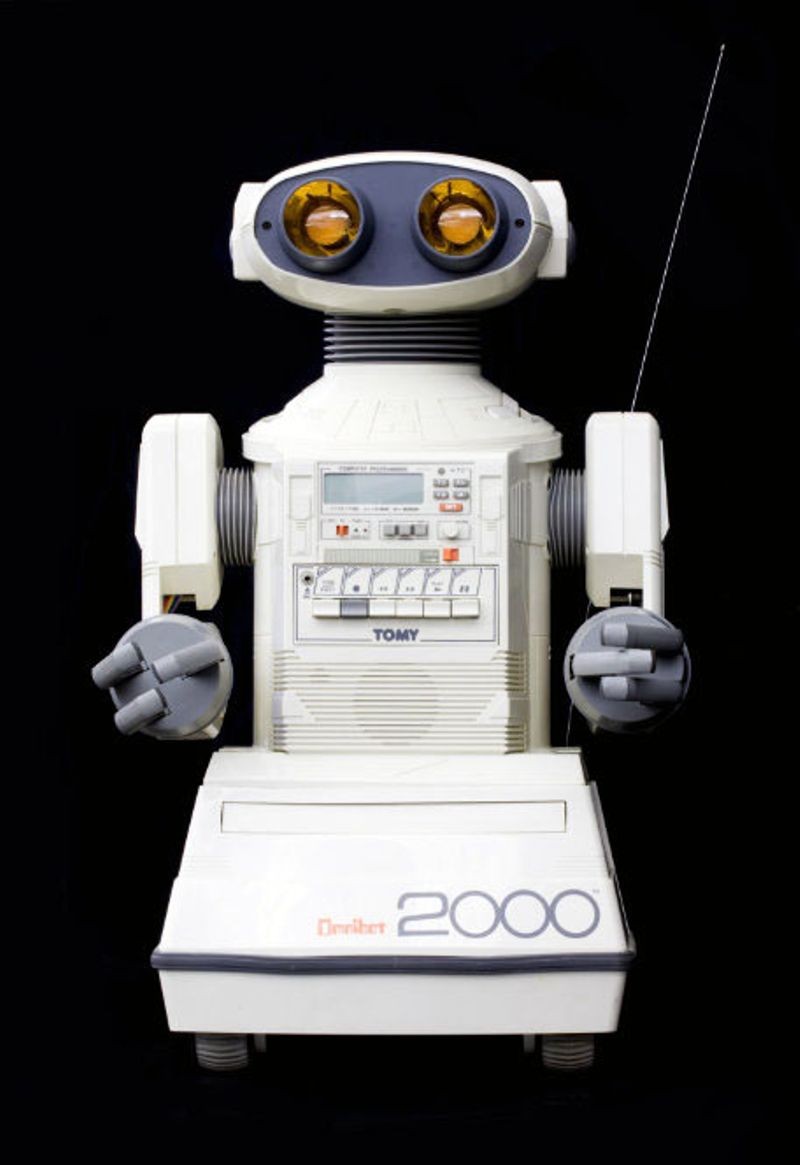
Omnibot 2000 toy robot
Omnibot 2000
The Omnibot 2000 remote-controlled programmable robot toy could move, talk and carry objects. The cassette player in its chest recorded actions to be taken and speech to be played.
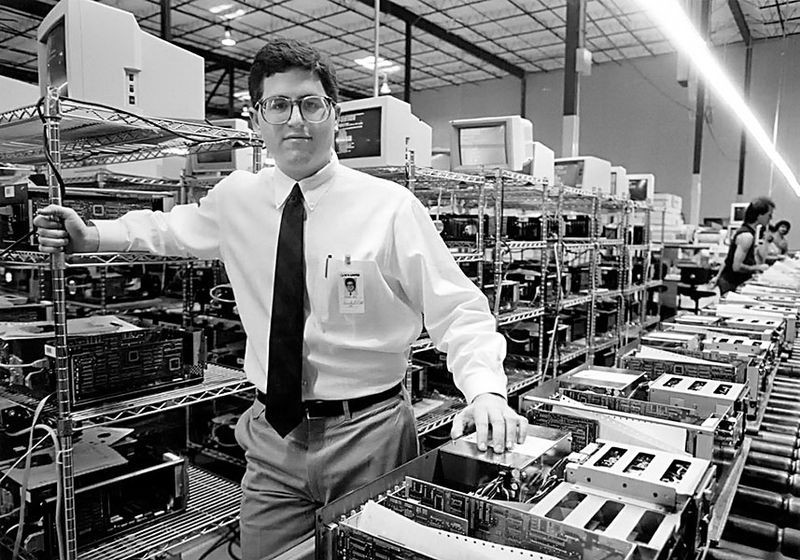
PC’s Limited founder Michael Dell
PC’s Limited is founded
In 1984, Michael Dell creates PC’s Limited while still a student of the University of Texas at Austin. The dorm-room headquartered company sold IBM PC-compatible computers built from stock components. Dell dropped out of school to focus on his business and in 1985, the company produced the first computer of its own design, the Turbo PC, which sold for $795. By the early 1990s, Dell became one of the leading computer retailers.
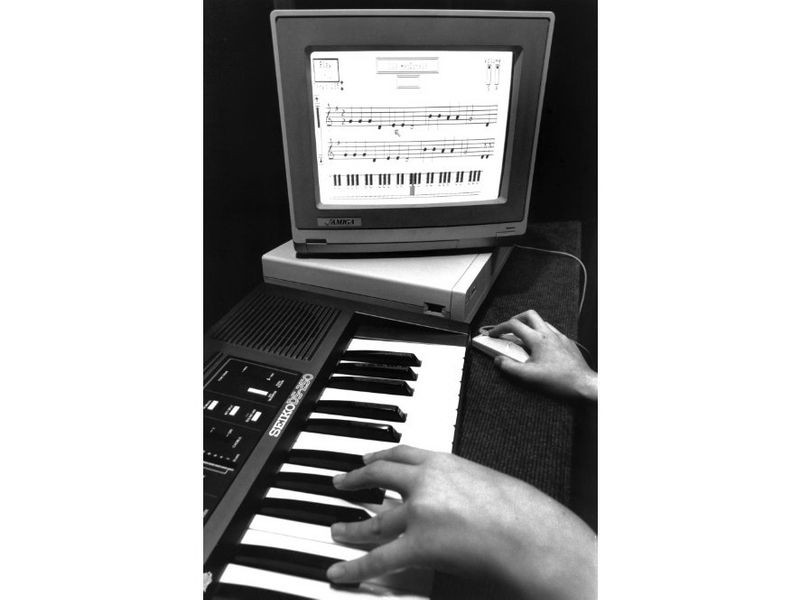
Music composition on the Amiga 1000
The Amiga 1000 is released
Commodore’s Amiga 1000 is announced with a major event at New York’s Lincoln Center featuring celebrities like Andy Warhol and Debbie Harry of the musical group Blondie. The Amiga sold for $1,295 (without monitor) and had audio and video capabilities beyond those found in most other personal computers. It developed a very loyal following while add-on components allowed it to be upgraded easily. The inside of the Amiga case is engraved with the signatures of the Amiga designers, including Jay Miner as well as the paw print of his dog Mitchy.
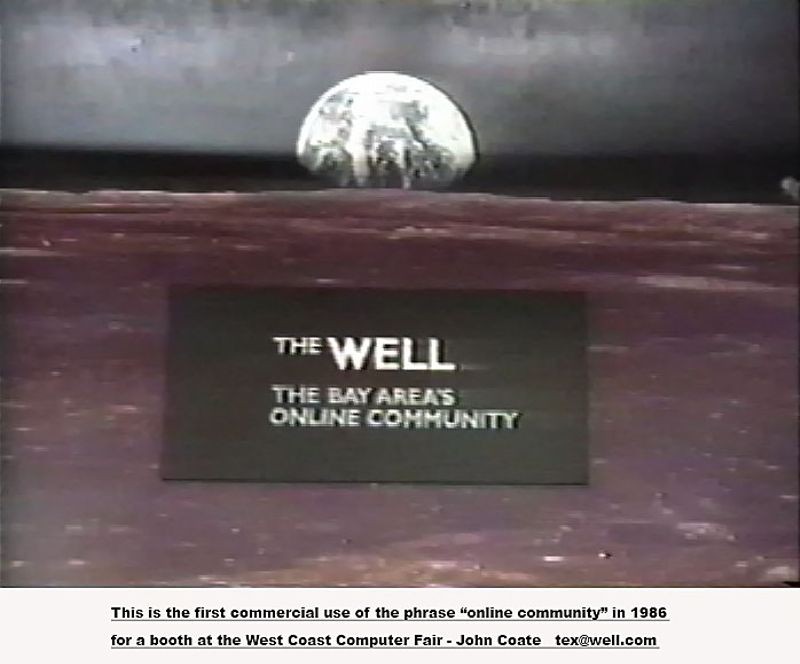
1986 booth at West Coast Computer Faire
The Whole Earth ‘Lectronic Link (WELL) is founded.
Stewart Brand, publisher of counterculture bible The Whole Earth Catalog, and Larry Brilliant start an Bulletin Board System (BBS) to host what they term an online community. The Well attracts an eclectic mix of intellectuals, computer geeks, hippies, Grateful Dead fans, writers, entrepreneurs, and journalists. Journalists are given free memberships in the early days, leading to many articles about the community and helping it grow.
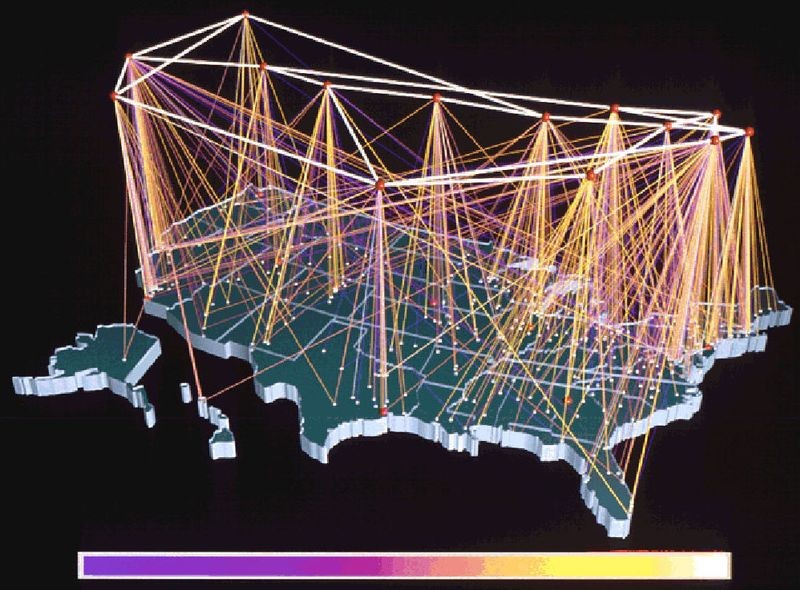
NSFNET Map
U.S. National Science Foundation Network (NSFNET) starts up
U.S. Internet protocols (TCP/IP) get a major boost when the National Science foundation forms the NSFNET, linking five supercomputer centers at Princeton University, Pittsburgh, University of California at San Diego, University of Illinois at Urbana-Champaign, and Cornell University. Soon, over a dozen regional and educational networks will be added, including BITNET, CSNET, and a dozen or so others. Parts of the original ARPAnet had been reassigned to NSFNET, while others had gone to the military network, MILNET. The NSFNET is a major factor in helping Internet protocols win out over rival protocols like OSI, SNA, and DECNET.

Promotional shot of the Compaq Deskpro 386s,
Compaq introduces the Deskpro 386 system
Compaq beats IBM to the market when it announces the Deskpro 386, the first computer on the market to use Intel´s new 80386 chip, a 32-bit microprocessor with 275,000 transistors on each chip. At 4 million operations per second and 4 kilobytes of memory, the 80386 gave PCs as much speed and power as older mainframes and minicomputers.
The 386 chip brought with it the introduction of a 32-bit architecture, a significant improvement over the 16-bit architecture of previous microprocessors. It had two operating modes, one that mirrored the segmented memory of older x86 chips, allowing full backward compatibility, and one that took full advantage of its more advanced technology. The new chip made graphical operating environments for IBM PC and PC-compatible computers practical. The architecture that allowed Windows and IBM OS/2 has remained in subsequent chips.

IBM PC-RT
IBM releases the first commercial RISC-based workstation
Reduced instruction set computers (RISC) grow out of the observation that the simplest 20 percent of a computer´s instruction set does 80 percent of the work. The IBM PC-RT had 1 MB of RAM, a 1.2-megabyte floppy disk drive, and a 40 MB hard drive. It performed 2 million instructions per second, but other RISC-based computers worked significantly faster.

LMI Lambda
LMI Lambda
The LMI Lambda LISP workstation is introduced. LISP, the preferred language for AI, ran slowly on expensive conventional computers. This specialized LISP computer, both faster and cheaper, was based on the CADR machine designed at MIT by Richard Greenblatt and Thomas Knight.
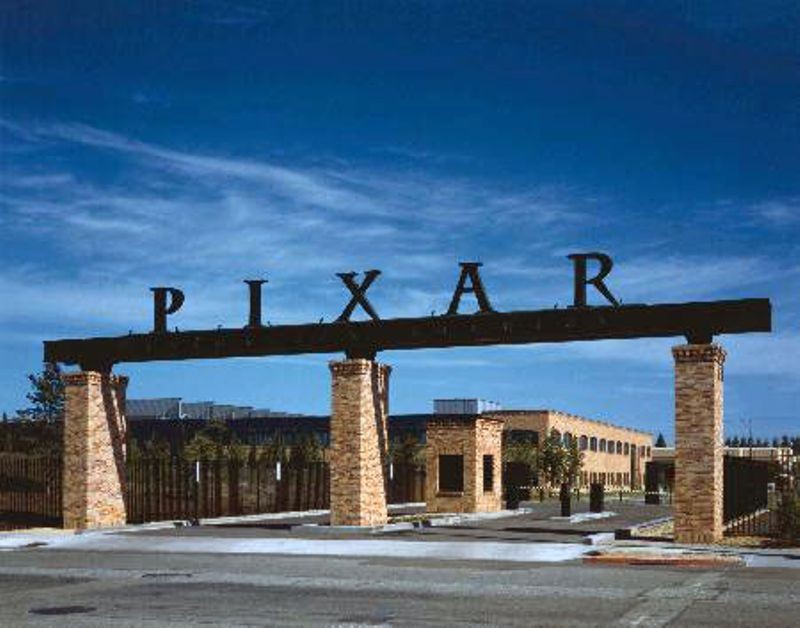
Entrance to Pixar Animation Studios
Pixar is founded
Pixar was originally called the Special Effects Computer Group at Lucasfilm (launched in 1979). The group created the computer-animated segments of films such as Star Trek II: The Wrath of Khan and Young Sherlock Holmes. In 1986, Apple Computer co-founder Steve Jobs paid 10 million dollars to Lucasfilm to purchase the Group and renamed it Pixar. Over the next decade, Pixar made highly successful (and Oscar-winning) animated films. It was bought by Disney in 2006.
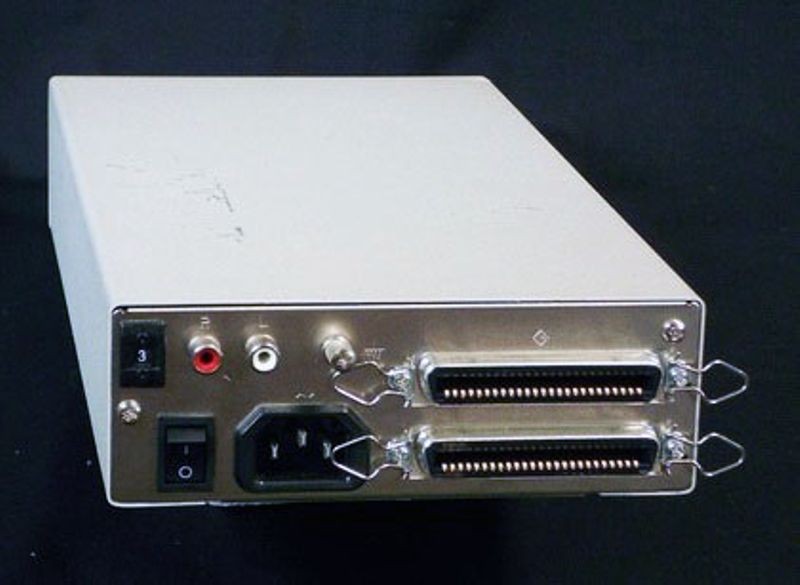
Two SCSI ports (right)
SCSI-1 standard
The SCSI-1 standard is adopted, and formalizes the interface that had its roots in SASI, which was introduced by Shugart Associates several years earlier. Before SCSI, external devices such as hard drives had specific and non-standardized interfaces for connecting to computers. SCSI introduced a common, single adapter for all of these devices. Commonly used in tape drives and hard disks, the SCSI interface allowed for multi-tasking when processing commands at a high speed.

Connection Machine CM-1
The Connection Machine is unveiled
Daniel Hillis of Thinking Machines Corporation moves artificial intelligence a step forward when he develops the controversial concept of massive parallelism in the Connection Machine CM-1. The machine used up to 65,536 one-bit processors and could complete several billion operations per second. Each processor had its own small memory linked with others through a flexible network that users altered by reprogramming rather than rewiring. The machine´s system of connections and switches let processors broadcast information and requests for help to other processors in a simulation of brain-like associative recall. Using this system, the machine could work faster than any other at the time on a problem that could be parceled out among the many processors.
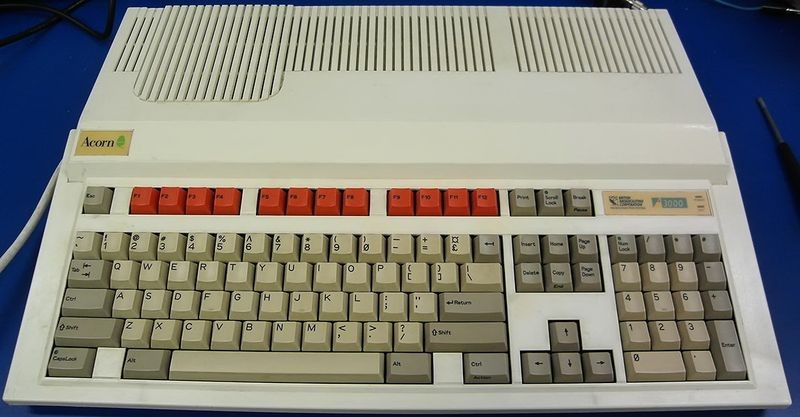
Acorn Archimedes microcomputer
Acorn Archimedes is released
Acorn’s ARM RISC microprocessor is first used in the company’s Archimedes computer system. One of Britain’s leading computer companies, Acorn continued the Archimedes line, which grew to nearly twenty different models, into the 1990s. Acorn spun off ARM as its own company to license microprocessor designs, which in turn has transformed mobile computing with ARM’s low power, high-performance processors and systems-on-chip (SoC).
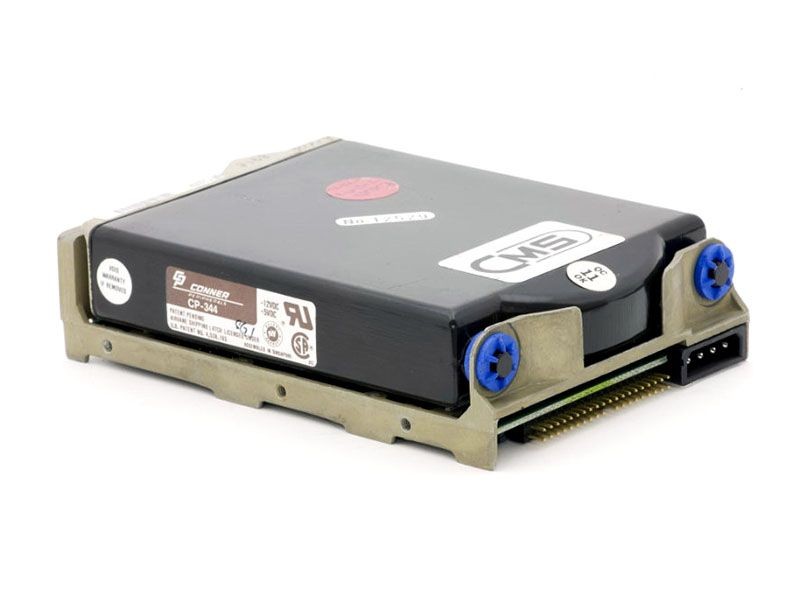
The Conner CP344 HDD, a later version of the CP340A
Conner CP340A hard disk drive (HDD)
The Conner CP340A hard disk drive (HDD) is introduced. It established the 3½-inch HDD form factor as the standard of the time. The CP340A was controlled by a microprocessor, used embedded servo positioning, and had self-testing functionality. It gained a huge market share very quickly due to an agreement with Compaq to use the product in their computers. Due to the customer-investor relationship with Compaq, Conner Peripherals became one of the fastest growing US companies at that time.
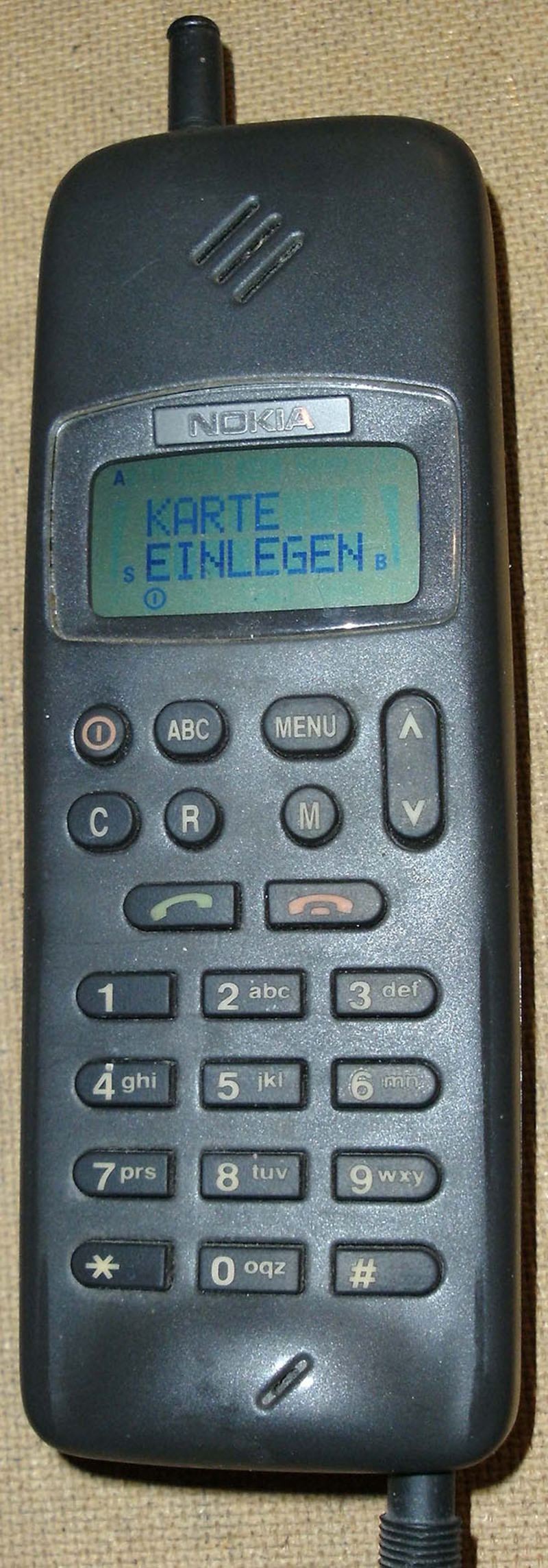
Nokia 1011, first common GSM phone
GSM standard formally agreed
Digital mobile networks had been pioneered by ARPA from the early 1970s for military use, but early cell phone networks for consumers are analog. They use traditional telephone circuit-switching, where there is a connection (circuit) between caller and recipient for the duration of the call. The connection seamlessly switches from cell to cell as the phone moves. In 1987, the European Community formally agrees on the GSM (Spécial Mobile Group, or GSM in French) standard for digital mobile telephony, including text messaging (SMS). Development work had begun five years earlier with major input from Ericsson, Deutsche Telekom, France Telecom and a number of others. GSM will reach customers in the early 1990s, in some markets at around the same time as competing standard CDMA from Qualcomm in the United States.
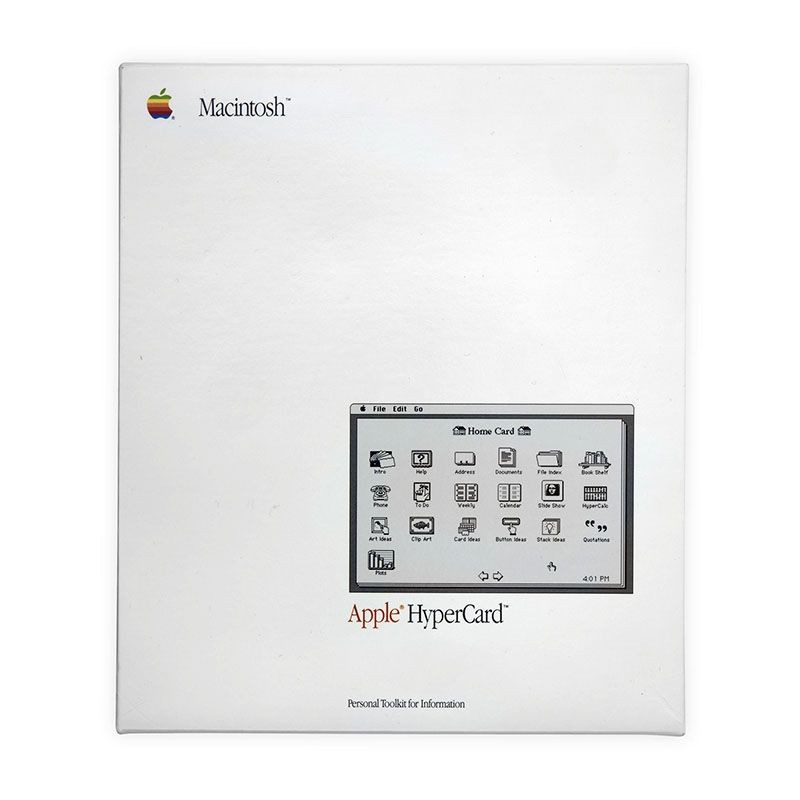
Apple HyperCard
HyperCard revives hypertext
Clicking on hyperlinks is what lets us “surf” the Web instead of plodding through it. Yet after its initial invention in the 1960s, computer hypertext had gone underground for 20 years. It got so obscure that the main father of the Web, Tim Berners-Lee, may have unknowingly re-invented it in 1980. Hypertext’s original inventors – and some true believers – had kept developing new applications, but mostly in academic environments or for specialized clients like the military. Without being named as such, hyperlinks had also been used in some online help systems and CD-ROMs.
By the late 1980s, a minor resurgence of interest leads to commercial hypertext programs like Owl – and then Apple’s well-hyped Hypercard. Soon, people are producing their own “stacks” of linked cards on every topic, as well as writing non-sequential hyper-novels. But HyperCard is standalone; you can only click through to other cards on the same computer.
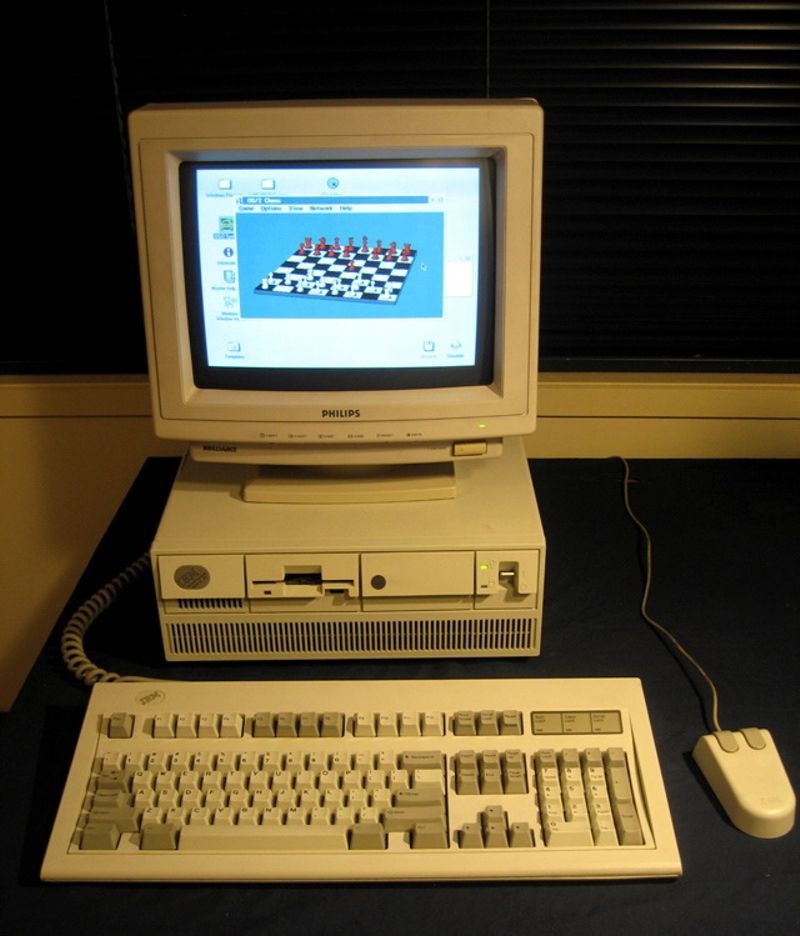
IBM PS/2
IBM introduces its Personal System/2 (PS/2) machines
The first IBM system to include Intel´s 80386 chip, the company ships more than 1 million units by the end of the first year. IBM released a new operating system, OS/2, at the same time, allowing the use of a mouse with IBM PCs for the first time. Many credit the PS/2 for making the 3.5-inch floppy disk drive and video graphics array (VGA) standard for IBM computers. The system was IBM’s response to losing control of the PC market with the rise of widespread copying of the original IBM PC design by “clone” makers.
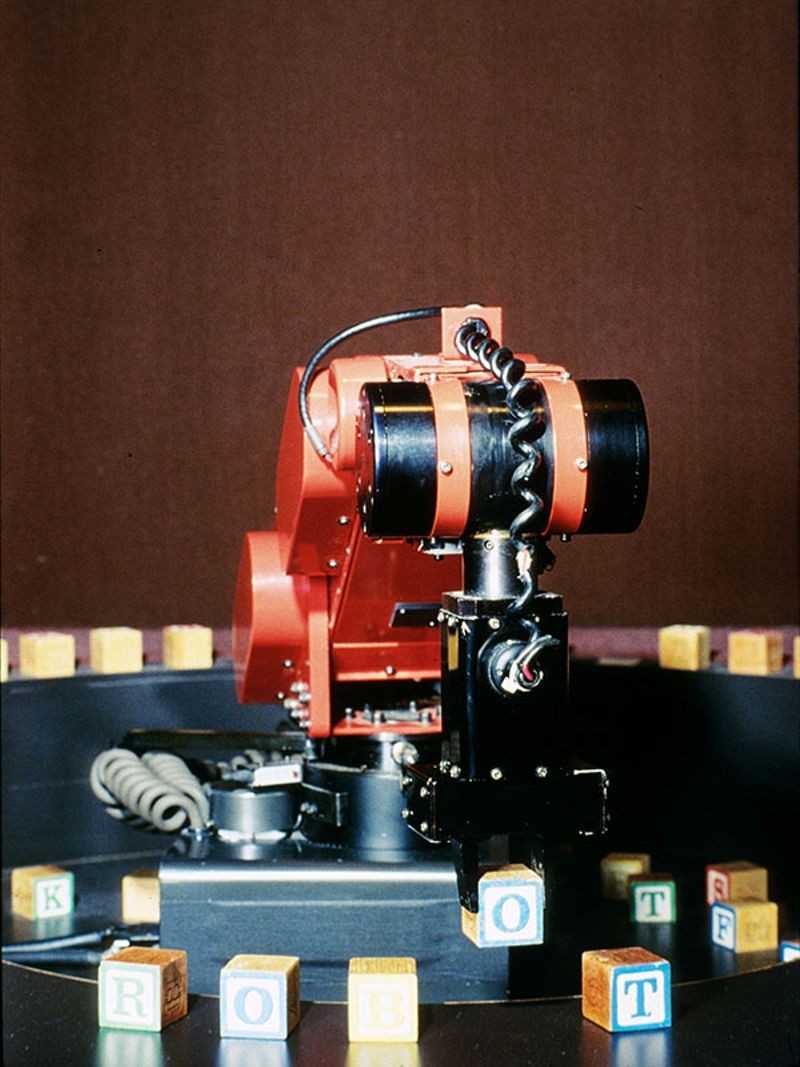
Movemaster RM-501 Gripper
Mitsubishi Movemaster RM-501 Gripper is introduced
The Mitsubishi Movemaster RM-501 Gripper is introduced. This robot gripper and arm was a small, commercially available industrial robot. It was used for tasks such as assembling products or handling chemicals. The arm, including the gripper, had six degrees of freedom and was driven by electric motors connected to the joints by belts. The arm could move fifteen inches per second, could lift 2.7 pounds, and was accurate within .02 of an inch.

PERL designer Larry Wall
Perl is written by Larry Wall
Perl (Practical Extraction and Report Language) is written by Larry Wall. It was intended to facilitate report processing and could scan and extract information from text files and ultimately create reports generated from that information. It was designed for ease of use and quick programming and has found multiple applications in every branch of computing. It is very useful in making other programs work together and has been called “the duct tape of the Internet.”
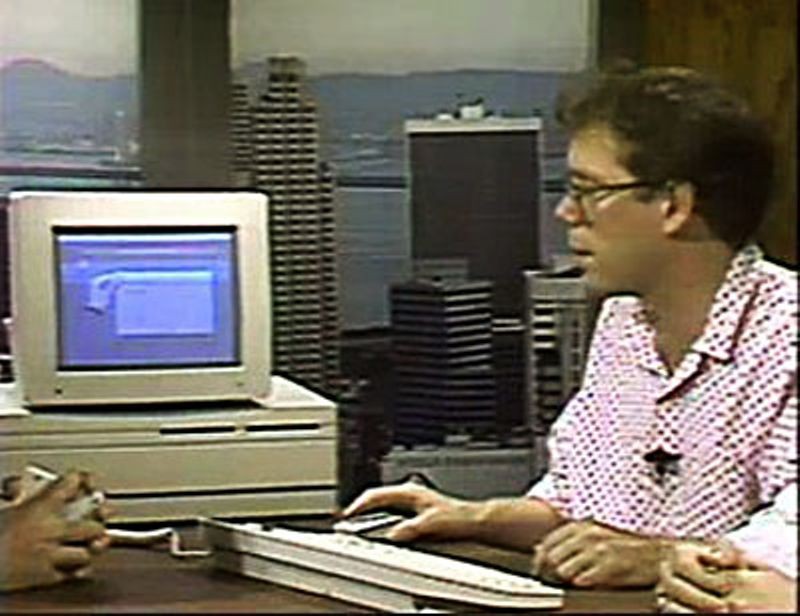
Bill Atkinson demonstrating HyperCard
William Atkinson designs HyperCard
Apple engineer William Atkinson designs HyperCard, a software tool that simplifies development of in-house applications. In HyperCard, programmers built “stacks” of information with the concept of hypertext links between stacks of pages. As a stack author, a programmer employed various tools to create his own stacks, linked together as a sort of slide show. Apple distributed the program free with Macintosh computers until 1992. Hypercard influenced the creation on the Internet protocol HTTP and JavaScript.
Tin Toy wins Oscar
Pixar´s Tin Toy becomes the first computer-animated film to win an Academy Award, taking the Oscar for Best Animated Short Film. In it, a wind-up toy first encountered a boisterous baby and then deals with the consequences. To illustrate the baby´s facial expressions, programmers defined more than 40 facial muscles on the computer controlled by the animator.
Founded in 1986, one of Pixar´s primary projects involved a rendering program called Renderman, which became a universal standard for describing 3D scenes. Renderman describes objects, light sources, cameras, and atmospheric effects such as fog or clouds. Pixar continued producing movies, including 1995´s Toy Story, the first full-length feature film created entirely by computer animation.
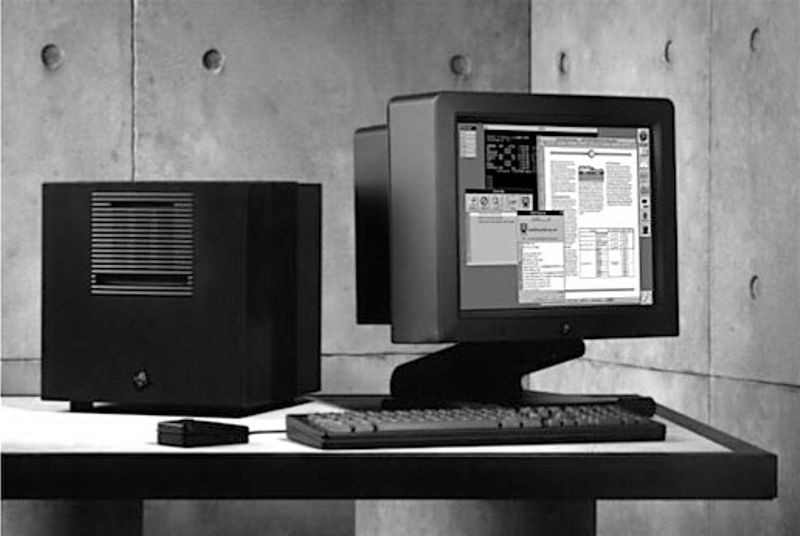
NeXT Cube
Apple co-founder Steve Jobs unveils the NeXT Cube
Steve Jobs, forced out of Apple in 1985, founds a new company – NeXT. The computer he created, an all-black cube was an important innovation. The NeXT had three Motorola microprocessors and 8 MB of RAM. Its base price was $6,500. Some of its other innovations were the inclusion of a magneto-optical (MO) disk drive, a digital signal processor and the NeXTSTEP programming environment (later released as OPENSTEP). This object-oriented multitasking operating system was groundbreaking in its ability to foster rapid development of software applications. OPENSTEP was used as one of the foundations for the new Mac OS operating system soon after NeXT was acquired by Apple in 1996.
Creative Arts releases the first SoundBlaster
The demand for improved graphics and sound for personal computer games encourages companies to build add-on sound cards for the IBM PC, with the SoundBlaster family of sound cards becoming the industry standard. Many of these competing cards were similar, but since the SoundBlaster had an additional game port, within a year it had become the best-selling expansion card for the IBM PC. For more than a decade, SoundBlaster cards were among the top-selling sound cards on the market.
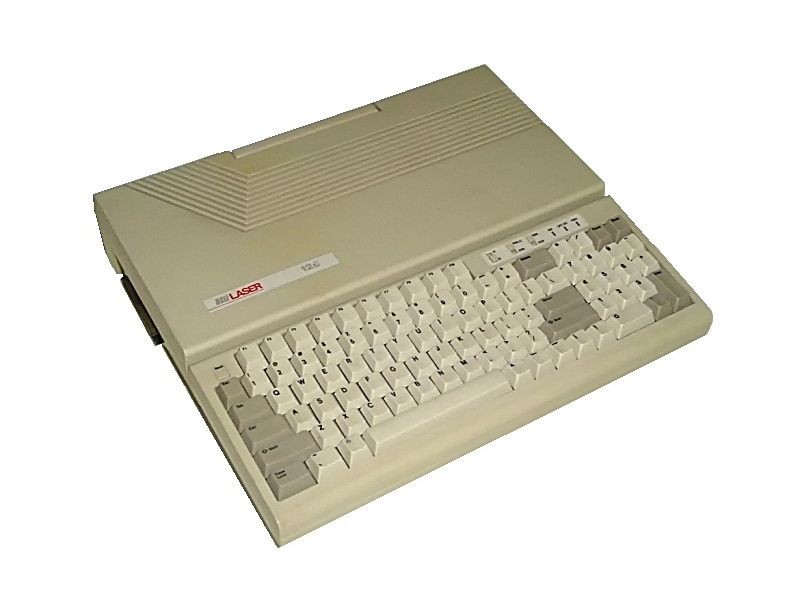
Laser 128 Apple II clone
Laser 128 is released
VTech, founded in Hong Kong, had been a manufacturer of Pong-like games and educational toys when they introduce the Laser 128 computer. Instead of simply copying the basic input output system (BIOS) of the Apple II as Franklin Computer had done, they reversed engineered the system and sold it for US $479, a much lower price than the comparable Apple II. While Apple sued to remove the Laser 128 from the market, they were unsuccessful and the Laser remained one of the very few Apple “clones” for sale.

Stephen Wolfram
Mathematica is created
Mathematica is created by Stephen Wolfram, a British scientist. It was a symbolic mathematical programming language used in mathematical, scientific, academic, and engineering fields. Mathematica was a complete ecosystem for computing that allowed symbolic entry of mathematical functions and equations as well as graphical display of the results.

Robert T. Morris
The Morris Worm
23 year old Robert T. Morris, the son of a computer security expert for the National Security Agency, sends a nondestructive worm through the Internet causing major problems for days for about 6,000 of the 60,000 hosts linked to the network. The result is widespread outages. This is the first worm to have a major effect on real-world computer systems, and publicizes the importance of network security. Morris will be the first person convicted under the “Computer Fraud and Abuse Act.” He will apologize in 2008, saying he’d sought to estimate the Internet’s size, not cause harm.

Then-Senator Al Gore, Jr.
100,000 hosts: The Internet Comes From Behind
At its official 1983 launch, the Internet had been a modest experimental network of networks owned by the U.S. government. As late as 1989, even insiders are betting against it – OSI is the official favorite for the future of internetworking, or connecting networks together. But in the meantime the Internet has quietly grown to 100,000 host machines, each with multiple users. By 1992 the Internet will have emerged as the new global standard, linking a million computers. In hindsight, the Internet has several key advantages, from a growing community of enthusiasts churning out working software and hardware, to free distribution with the UNIX operating system, to being built in to common hardware like Cisco routers.
But the decisive factor? Probably money—especially U.S. government support from the National Science Foundation’s NSFNET and other sources. At the instigation of computer pioneers, Senator Al Gore begins working in 1987 on what will become his High Performance Computing and Communication Act. When it is funded in 1991, the Act creates the National Information Infrastructure, which promotes and funds over $600 million worth of various networking initiatives. Gore famously calls it the “information superhighway.”

Deep Thought I circuit board
Computer defeats master chess player
David Levy is the first master chess player to be defeated by a computer. The program Deep Thought defeats Levy who had beaten all other previous computer counterparts since 1968.
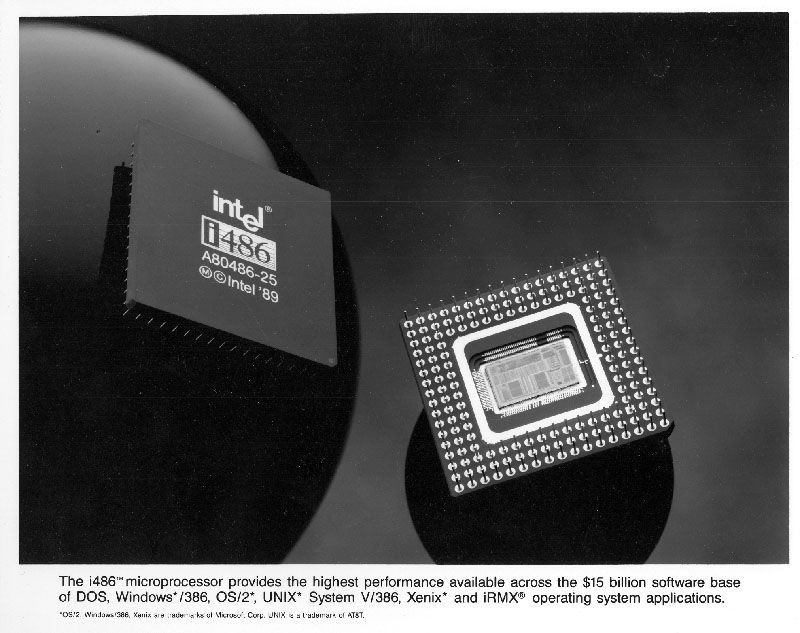
Intel 80486 promotional photo
Computer History Museum
Intel introduces the 80486 microprocessor
Intel released the 80486 microprocessor and the i860 RISC/coprocessor chip, each of which contained more than 1 million transistors. The RISC microprocessor had a 32-bit integer arithmetic and logic unit (the part of the CPU that performs operations such as addition and subtraction), a 64-bit floating-point unit, and a clock rate of 33 MHz.
The 486 chips remained similar in structure to their predecessors, the 386 chips. What set the 486 apart was its optimized instruction set, with an on-chip unified instruction and data cache and an optional on-chip floating-point unit. Combined with an enhanced bus interface unit, the microprocessor doubled the performance of the 386 without increasing the clock rate.
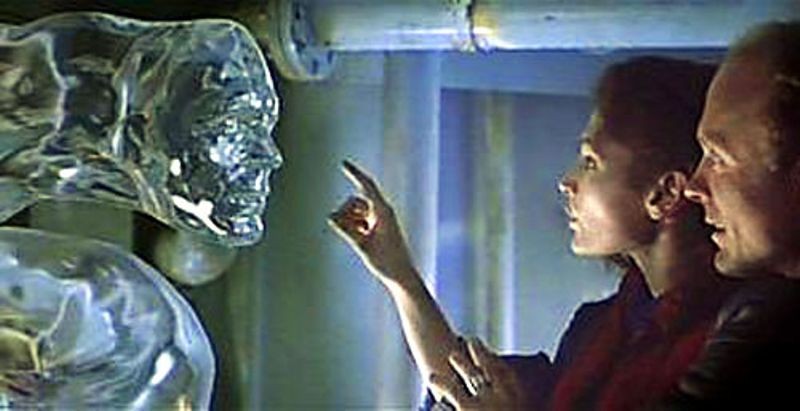
Pseudopod scene from The Abyss
James Cameron’s The Abyss is released
Director James Cameron’s films The Terminator and Aliens were major science fiction successes. His follow-up film, The Abyss, stands as one of the most significant science fiction films of the 1980s. Telling the story of an oil rig team and their encounter with aliens, The Abyss featured impressive graphics for the time, but also introduced a new tool to the effects supervisor’s tool chest, Photoshop. Industrial Light & Magic (ILM) used Photoshop extensively while doing the post-production work on The Abyss, including being used in the creation of the film’s most famous effect – the Alien Pseudopod. The Abyss won the Academy Award for Best Special Effects in 1990.
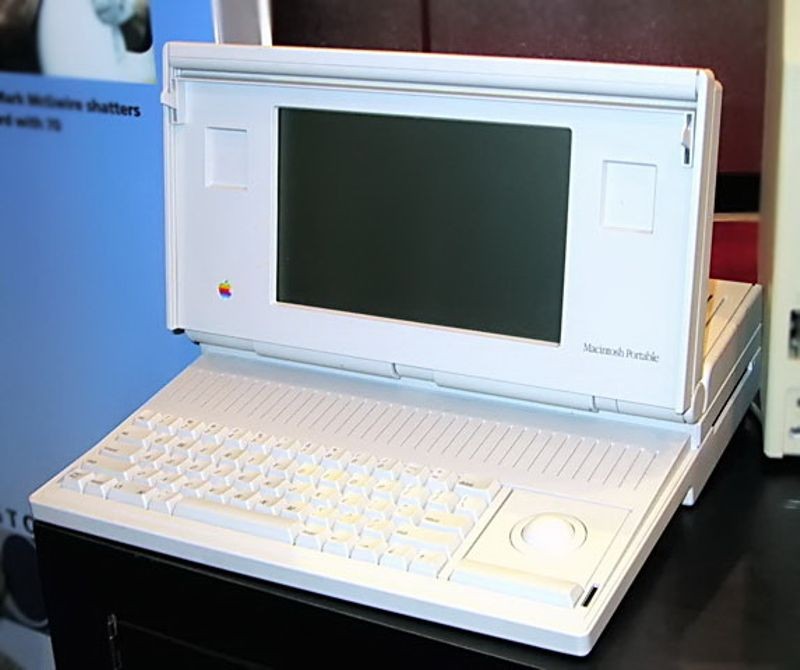
Macintosh Portable
Macintosh Portable is introduced
Apple had initially included a handle in their Macintosh computers to encourage users to take their Macs on the go, though not until five years after the initial introduction does Apple introduce a true portable computer. The Macintosh Portable was heavy, weighing sixteen pounds, and expensive (US$6,500). Sales were weaker than projected, despite being widely praised by the press for its active matrix display, removable trackball, and high performance. The line was discontinued less than two years later.
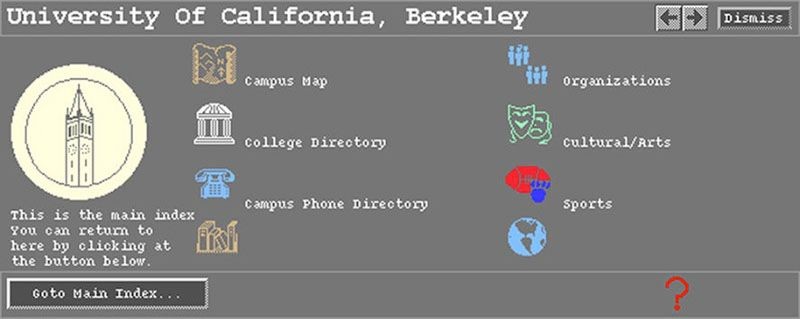
Viola Internet hypertext system circa 1989
More than six Online Systems for the Internet
The Internet connects over a million people by the end of the 1980s and is growing fast. But because it is a closed, non-commercial network used mostly by geeks, it lacks online systems to help ordinary people navigate it. None of the companies making slick, easy-to-use online systems like Minitel in France, CompuServe, AOL, etc. want to invest in porting them to an academic network. In any case they have their own networks.
This vacuum at the top of the Internet creates an opportunity for small players to try and create or adapt their own online systems. Usenet is the first; though mostly for geeks its discussion groups are quite popular and it gets ported to run over the Internet by 1986. Others range from low-key commercial ventures like WAIS and Hyper-G to student projects like Viola, Lynx, and Gopher. Several use clickable hypertext links – including one small experiment ambitiously called the “WorldWideWeb.”
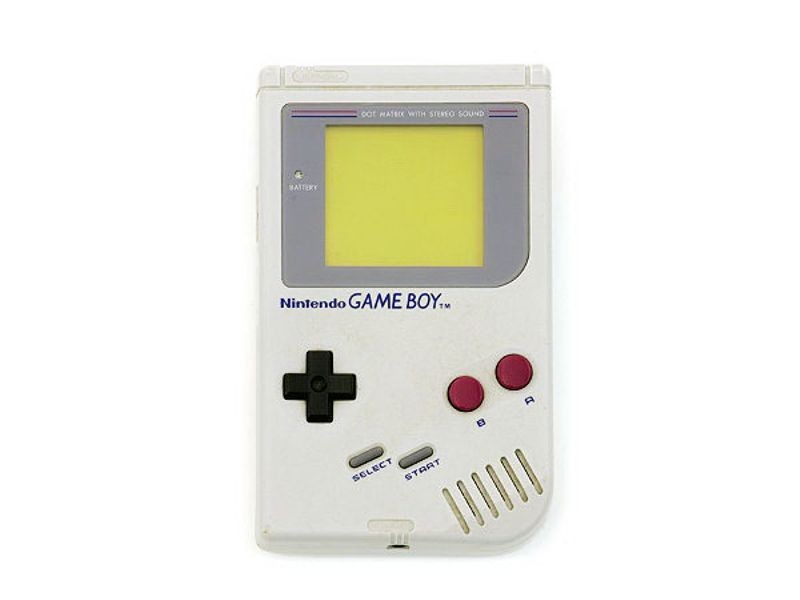
GameBoy game console
Nintendo releases the Game Boy handheld game console
Handheld electronic games had been popular for more than a decade by the time Nintendo introduces the Game Boy. The system used removable game cartridges to play on its 2.9-inch black and white screen. Game Boy’s popularity was helped by its major release title, the puzzle game Tetris. Over nearly twenty years, more than one hundred million Game Boys were sold, making it one of the all-time, top-selling game systems.




